#-15% on all romantic commissions until the end of february!
Explore tagged Tumblr posts
Text

Another commission for @wind-up-nhaama of Odette Tavelyen and Gale! Thank you so so much once again 😄❤️
ko-fi | info and commissions
#commissions#example: flat colour#-15% on all romantic commissions until the end of february!#if you think this style looks familiar a hefty dose of inspiration was taken from the tgcf donghua's first opening#the flat full of silhouettes but sparkly golden feel is something i thought would be absolutely perfect for an illustration like this#bg3#baldur's gate 3#bg3 oc#gale dekarios#art#fanart#digital art#gale x tav
357 notes
·
View notes
Photo






Child Soldiers in the Civil War
Although most Civil War soldiers were between 18 and 39 years old, many young children also fought in the war. It is estimated that at least 100,000 Union soldiers were boys under 15 years old and about 20 percent of all Civil War soldiers were under 18. Since soldiers had to be at least 18 years old to enlist in the military, many of these boys lied about their age in order to join.
Other times, especially as the casualties climbed and more soldiers were needed, recruiters looked the other way when underage boys signed up.
Coincidentally, it was this abundance of young, boyish-looking men in the ranks that made it easier for young women to disguise themselves as men and also sign up as soldiers.
These boy soldiers usually served as drummer boys, musicians, messengers, nurses and scouts for the troops. Yet, during the heat of battle, many of these boys put these duties aside and joined the troops in combat.
One such soldier was Johnny Clem, an 11 year-old drummer boy for the Union army. Johnny became a celebrity during the battle of Chickamauga when he picked up a gun and shot a Confederate officer after he demanded Johnny to surrender. The army later promoted Johnny to sergeant and awarded him a silver medal.
Johnny Clem
Johnny eventually earned the nickname “Drummer Boy of Chickamauga” or “Johnny Shiloh.” He was also commissioned by President Ulysses S. Grant as a second-lieutenant in 1871. Johnny was the last Civil War soldier still actively serving in the army when he retired, as Brigadier-General, in 1915.
Another such soldier was John Cook, a 15-year-old Union bugle player, who put down his instrument and volunteered to operate a cannon during the famous battle of Antietam. Cook later received the Medal of Honor for his actions during the battle.
John Cook, a 15-year-old Union bugler who earned the Medal of Honor during the Battle of Antietam
The youngest Union soldier and the youngest soldier to fight in the Civil War was a boy named Edward Black. Edward was born on May 30 in 1853, making him just 8 years old when he joined the Union army on July 24, 1861 as a drummer boy for the 21st Indiana volunteers. He is also considered one of the youngest soldiers ever to serve in the history of the U.S. Army.
Black was captured at the Battle of Baton Rouge in August of 1862 but was freed when the Union army won the battle. After the army discharged him in September of 1862, Edward reenlisted with 1st Indiana Volunteer Heavy Artillery in February 1863. He continued fighting until the end of the war and was honorable discharged in February of 1866.
According to the book, The Fighting Men of the Civil War, the youngest Confederate soldier was probably a boy named Charles C. Hay who joined the Alabama regiment when he was eleven years old.
The youngest soldier injured during the war was a boy named William Black, who was just 12 years old when his left hand and arm were shattered by an exploding shell.
The youngest recruits often served as musicians and drummers, yet this did not prevent them from being wounded or injured like Orion Howe, a 14 year-old drummer who was severely wounded when he volunteered to retrieve some much-needed ammunition for Colonel Malmborg from General Sherman during the battle of Vicksburg.
Orion Perseus Howe, 14-year-old drummer boy and Medal of Honor recipient, circa 1863
His regiment’s historian wrote an account of Howe’s deed, which was published in the book Sherman: Fighting Prophet:
“We could see him nearly all the way…he ran through what seemed a hailstorm of canister and musket-balls, each throwing up its little puff of dust when it struck the dry hillside. Suddenly he dropped and hearts sank, but he had only tripped. Often he stumbled, sometimes he fell prostrate, but was quickly up again and he finally disappeared from us, limping over the summit and the 55th saw him no more for several months.”
Howe later received the Medal of Honor for his actions and Abraham Lincoln appointed him to the United States Naval Academy in July of 1865.
Many of these children joined the army because they were either runaways, orphans or they wanted to fight alongside their brothers and fathers.
Private Edwin Francis Jemison
Although they held romantic and heroic notions of war, it wasn’t long until they experienced the full horrors of war. One boy from Wisconsin, Elisha Stockwell, described his experience during the battle of Shiloh in 1862:
“I want to say, as we lay there and the shells were flying over us, my thoughts went back to my home, and I thought what a foolish boy I was to run away and get into such a mess as I was in. I would have been glad to have seen my father coming after me.”
Another boy, 16-year-old John A. Cockerhill, also described his experience at Shiloh:
“I passed… the corpse of a beautiful boy in gray who lay with his blond curls scattered about his face and his hand folded peacefully across his breast. He was clad in a bright and neat uniform, well garnished with gold, which seemed to tell the story of a loving mother and sisters who had sent their household pet to the field of war. His neat little hat lying beside him bore the number of a Georgia regiment… He was about my age… At the sight of the poor boy’s corpse, I burst into a regular boo hoo and started on.”
Although young children, these boys served their country with as much bravery and dedication as any of the full grown men they fought alongside.
About 48 young boys under age 18 won the Congressional Medal of Honor for their bravery during battle and many continued to serve in the army long after the war ended.
Sources: Fighting Men of the Civil War; William C. Davis; Russ A. Pritchard; 1989 Soldiers Blue and Gray; James I. Robertson; 1998 Boy Soldiers of the Confederacy; Susan R. Hull; 1905 Children of the Civil War; Candice F. Ransom; 1998 Sherman: Fighting Prophet; Lloyd Lewis; 1993 PBS: Kids in the Civil War: http://www.pbs.org/wgbh/americanexperience/features/general-article/grant-kids/ New York Times; The Boys of War; Cate Lineberry, October 2011: http://opinionator.blogs.nytimes.com/2011/10/04/the-boys-of-war/
5 notes
·
View notes
Text
August Forecast for Capricorn
Stay centered, Capricorn. Your energy could come in waves this month, spiking to a high-pitched intensity one day and dropping into the depths the next. The Sun is taking its annual plunge in Leo and your eighth house of intimacy, merging and transformation, a time when you’ll crave more privacy and one-on-one encounters. Skip the huge crowds that make you feel overwhelmed. You’re an emotional sponge and could soak up everyone’s feelings; or you might just have your mind on one specific matter during this tunnel-vision transit, and it will be hard to engage in lighthearted small talk. With the Sun heating up your erotic eighth house, this could also be one steamy season—hello, sizzling summer escapades!
But be careful where you aim that concentrated Capricorn power, especially when the emotional thunderclouds gather. Communication planet Mercury is retrograde in Leo and this potent zone from July 26 to August 19, which notoriously mucks up communication, technology and travel plans. With Mercury awry in Leo, a problematic ex may resurface, along with some old trust issues or unhealed wounds from a past betrayal. You might be unsure of someone’s true motives and whether they’re being above-board with you.
The eighth house rules joint ventures and shared finances, so money matters could be lit up with both opportunities and complicated entanglements in August. While Mercury is retrograde, go easy on the spending, especially with your credit cards (lock them up—or cut ’em up—if you can!). Guard against identity theft by strengthening passwords and deleting anything in a social media feed or in your email that could potentially be compromising. Better safe than sorry. Watch where you send those racy texts and DMs—during Mercury retrograde, they could end up in the wrong person’s feed. Oops!
The fiercest day of the month arrives August 11, when a Leo solar (new moon) eclipse beams into your alchemical eighth house, bringing a supercharged fresh start to your most intimate ties and financial endeavors. You might receive a windfall through a loan, grant, commission or inheritance or have a chance to buy or sell property or renovate your home. An exciting opportunity to merge your powers for mutual gain may come out of the blue. The eclipse could also bring a soulmate encounter (with steamy benefits!) or unexpected news of a proposal or pregnancy (yours or someone close to you).
In astrology, solar and lunar eclipses are harbingers of change. They push us off the fence if we’ve been procrastinating or wishy-washy, and force events to culminate quickly. While that pace can be jarring, once the dust settles, everything starts to make sense. This is the second-to-last eclipse in a series that’s been touching down on the Leo/Aquarius axis since February 2017, bringing waves of change to your self-confidence, work, money management, living situation and daily habits. One final eclipse will arrive here in January 2019. Anything you invest in at today’s eclipse could start to show returns—or at least let you know whether it will ever pay off—by early next year.
You’ll be glad to let the drama (hopefully) simmer down starting August 7, when combustible Uranus starts a five-month retrograde. Since May 15, Uranus has been in Taurus, causing sweeping change in your fifth house of passion, self-expression and theatrics. This is Uranus’ first visit here since 1942, a once-in-a-lifetime transit for many Capricorns that will last until April 2026. If your love life has suddenly become spicy—or wildly unpredictable—that’s the side-spinning planet playing the role of a quirky Cupid.
The first four months of Uranus’ retrograde could slow down some of the curveballs—or possibly bring the return of an ex, since retrogrades rule the past. You might also decide to get a little experimental in the boudoir or to date someone who’s a dramatically different “type” than the usual. Uranus in your spotlight-stealing fifth house may have brought fame or increased attention. Has it gone to your head a little bit? If you’ve been playing the diva role, Uranus retrograde will remind you to keep it humble. On the other hand, if you haven’t been speaking up for yourself and your ideas, you could work through old confidence issues, perhaps with some mentorship or training. Steady Capricorn, have you become a little fickle? Rambunctious Uranus can make you run hot and cold, so be mindful not to lead people on.
You’ll get another chance to self-assess starting August 12, when energizing Mars plows into Capricorn for its second visit this year (its first trip was from March 17 to May 16). While this would normally give you a jolt of inspiration and sexy magnetism, Mars will be retrograde until August 27, which could cause you to come on way too strong or hit a sour note with people. The silver lining: From August 27 to September 10, you’ll have Mars moving full steam ahead through your sign. Your confidence and charisma should rocket off the charts—and others will surely take note!
This will only accelerate starting August 23, when the Sun starts a month-long visit to Virgo and your expansive ninth house. Adventure, travel and endless possibilities spread out in front of you as you emerge from that emo cocoon. And when the Sun snaps into a rare and harmonious grand trine with radical Uranus in your passion sector and your ruling planet, structured Saturn, in Capricorn, some of those starry-eyed visions could turn into tangible reality. The caveat? You’ll need to ditch some (not all!) of your trademark caution to seize this moment. An opportunity for love, fame or a chance to spread a powerful message could arise. Make sure you’re at your glamorous and charismatic best! (Every Cap we know has secret “stage presence,” even if you only pull it out for select occasions.) You could multiply your fanbase and following…or follow your heart with a love affair, whether that’s a romantic adventure with your one-and-only or a far-flung fling with someone wildly different than your usual type.
The next day, August 26, the year’s only Pisces full moon spotlights your communication house, bringing exciting news or long-overdue dialogue. At last, you’ll get the answer you’ve been waiting for, and you can proceed accordingly instead of staying stuck in limbo. Local events could turn up kindred spirits and great conversations that lead to more. Hit the street fair or late summer festival or host a gathering at your favorite hotspot where you can play superconnector and introduce your savviest friends. Don’t be afraid to “go there” in your conversations—move beyond small talk and voice your opinions and ideas. When sizzling Mars ends its two-month retrograde on August 27 and speeds forward in Capricorn, there will be no holding you back!
Love & Romance
Time to set some love #goals, Capricorn? On August 6, Venus pings into Libra and your tenth house of career and long-range planning for the first of two trips this year. You may get suddenly serious about the future, both in terms of your profession and your relationship. If you’re in one, you might find yourself initiating conversations that begin with, “So, I’ve been thinking about our holiday plans,” or “Next summer, I’d really like to…” Single? Stay open to people you meet at work or industry events. As long as you’re not breaking company policy, consider them fair game.
Keep in mind: Venus will be retrograde for its second trek through Libra, which is from October 31 to November 16. New relationships may hit a speed bump, or issues that you’re working on might take a sideways turn. Here’s where that famous Capricorn patience will come in very handy! An office romance could sour when Venus makes its U-turn later this year, so be very sure you’re both mature adults who will handle things with civility if things don’t work out.
With Mercury retrograde in Leo and your erotic eighth house until August 19, you might be tempted to hook up with an ex or go down a clandestine rabbit hole that’s a clear dead end. What do you really want out of this? Be sure you can answer that before you get entangled emotionally or sexually. For couples, this could be a powerful time to work through a thorny issue, perhaps with a therapist or healer to mediate. Money matters could be a source of tension, but the hidden blessing is that you’ll actually start talking about them—and all the embedded feelings of pain, shame or old baggage that might be underlying those power struggles. If you’re splitting up, you might need to have a painful conversation about how to divide up the shared property.
An especially potent day for building security and having a serious talk about the long term comes on August 7, when cosmic lovebirds Venus and Mars form a rare, harmonious trine (120-degree angle). Attached? Do something luxe and upscale to celebrate your couplehood. Singles should raise your standards and keep the bar high. Skip the local dive bar and go somewhere you have to dress up. That alone could help you meet a successful someone who’s got their life together.
But careful where you cast your charms. Mars is retrograde from June 26 to August 27. It’s been back-pedaling through Aquarius and your zone of career and money, which may have ramped up work stress that cut into your relationship or given you a few waves of anxious insecurity. On August 12, it will back into Capricorn for the duration of the retrograde, which could leave you feeling intensely self-conscious. During this signal-scrambling transit, your message might be lost in translation. Rather than assume everyone knows what you’re saying, make a point of being simple and precise. As a backup, get assurances that people heard you loud and clear.
Key Dates
August 9: Venus-Saturn Square Second thoughts? Cautious Saturn slams the brakes on dreamy Venus, who might be getting a little carried away with romantic pipe dreams or plans for the future. Make sure you both want the same things for the long haul before you start picking baby names or china patterns.
Money & Career
Balance those books, Capricorn. This is one of your annual “money months,” as the Sun visits Leo and your eighth house of property, long-term wealth and shared assets. With an August 11 Leo solar eclipse shaking up business as usual, you might start looking at your personal financial model through a new lens over the next six months. An exciting opportunity to multiply your moolah could arrive unexpectedly—and you’ll need to adapt fast! Keep a keen eye on every transaction while Mercury is retrograde in Leo from July 26 to August 19, which can cause technological glitches, erroneous charges (read those monthly bank statements) and risks to sensitive data.
Another reason not to rush into anything? Hasty Mars is spinning backward for nearly the whole month, which could cause you to miscalculate. Mars has been retrograde in Aquarius and your money house since June 26, which may have heaped on some financial stress. While Mars won’t straighten out until August 27, it WILL leave your money sector on August 12, which could lift some of the tension around work, bills and budgets. Stressful assignments, unexpected expenses and demanding clients may have left you hustling through the summer, and at the same time, colleagues’ tempers could have been short.
You’ll be happy to see Mars go, but unfortunately it will back into YOUR sign for the duration of its retrograde, from August 12 to 27, joining structured Saturn and power-tripping Pluto, which are both retrograde in Capricorn. Whew! If you have any vacation days, take them now. Otherwise, keep a very low profile and work behind the scenes. This is an excellent time to finish a project you started a while back. But hold off on any splashy launches until next month if you can—when Saturn straightens out on September 6, your ideas will have velocity AND staying power.
Key Dates
August 10: Mercury-Jupiter Square When supersizer Jupiter flashes its high beams at a retrograde Mercury, you or someone you work closely with may present an outsized dream but not have any idea how to pull it off. Nip it in the bud before you waste precious time, money or other resources trying to develop this. If anything, this is a good day to revisit an idea and see how much you can scale it BACK.
Love Days: 4, 9 Money Days: 15, 24 Luck Days: 12, 22 Off Days: 6, 11, 19
33 notes
·
View notes
Text
Books with Queer Happiness
Since today marks the last day of Pride Month, I thought it might be fitting to share a list of LGBT books that have happy endings.

Wonders of the Invisible World by Christopher Barzak Published by Knopf Books for Young Readers on September 8, 2015 Pages: 352
Seventeen-year-old Aidan Lockwood lives in the sleepy farming community of Temperance, Ohio—known for its cattle ranches and not much else. That is until Jarrod, a friend he hasn't seen in five years, moves back to town and opens Aidan's eyes in startling ways: to Aidan's ability to see the spirit world; to the red-bearded specter of Death; to a family curse that has claimed the lives of the Lockwood men one by one…and to the new feelings he has developed for Jarrod.

Amazon The Book Depository Barnes & Noble Barnes and Noble Target If you purchase through these links, CamrynDaytona recieves a small commission.


Everything Leads to You by Nina LaCour Published by Dutton Books for Young Readers on May 15, 2014 Pages: 307
A love letter to the craft and romance of film and fate in front of—and behind—the camera from the award-winning author of Hold Still. A wunderkind young set designer, Emi has already started to find her way in the competitive Hollywood film world. Emi is a film buff and a true romantic, but her real-life relationships are a mess. She has desperately gone back to the same girl too many times to mention. But then a mysterious letter from a silver screen legend leads Emi to Ava. Ava is unlike anyone Emi has ever met. She has a tumultuous, not-so-glamorous past, and lives an unconventional life. She’s enigmatic…. She’s beautiful. And she is about to expand Emi’s understanding of family, acceptance, and true romance.

Amazon The Book Depository Barnes & Noble Barnes and Noble Target If you purchase through these links, CamrynDaytona recieves a small commission.


Not Your Sidekick (Sidekick Squad, #1) by C.B. Lee Published by Duet Books on September 8, 2016 Pages: 283
Welcome to Andover… where superpowers are common, but internships are complicated. Just ask high school nobody, Jessica Tran. Despite her heroic lineage, Jess is resigned to a life without superpowers and is merely looking to beef-up her college applications when she stumbles upon the perfect (paid!) internship—only it turns out to be for the town’s most heinous supervillain. On the upside, she gets to work with her longtime secret crush, Abby, who Jess thinks may have a secret of her own. Then there’s the budding attraction to her fellow intern, the mysterious “M,” who never seems to be in the same place as Abby. But what starts as a fun way to spite her superhero parents takes a sudden and dangerous turn when she uncovers a plot larger than heroes and villains altogether.

Amazon The Book Depository Barnes & Noble Barnes and Noble Target If you purchase through these links, CamrynDaytona recieves a small commission.


Ash by Malinda Lo on September 1, 2009 Pages: 264
Cinderella retold In the wake of her father's death, Ash is left at the mercy of her cruel stepmother. Consumed with grief, her only joy comes by the light of the dying hearth fire, rereading the fairy tales her mother once told her. In her dreams, someday the fairies will steal her away, as they are said to do. When she meets the dark and dangerous fairy Sidhean, she believes that her wish may be granted. The day that Ash meets Kaisa, the King's Huntress, her heart begins to change. Instead of chasing fairies, Ash learns to hunt with Kaisa. Though their friendship is as delicate as a new bloom, it reawakens Ash's capacity for love-and her desire to live. But Sidhean has already claimed Ash for his own, and she must make a choice between fairy tale dreams and true love. Entrancing, empowering, and romantic, Ash is about the connection between life and love, and solitude and death, where transformation can come from even the deepest grief.

Amazon The Book Depository Barnes & Noble Barnes and Noble Target If you purchase through these links, CamrynDaytona recieves a small commission.


Love: Beyond Body, Space & Time by Hope Nicholson, David Alexander Robertson Published by Bedside Press on September 30, 2016 Pages: 125
"Love Beyond, Body, Space, and Time" is a collection of indigenous science fiction and urban fantasy focusing on LGBT and two-spirit characters. These stories range from a transgender woman trying an experimental transition medication to young lovers separated through decades and meeting far in their own future. These are stories of machines and magic, love, and self-love. This collection features prose stories by:Cherie Dimaline "The Girl Who Grew a Galaxy," "Red Rooms"Gwen Benaway "Ceremonies for the Dead"David Robertson "Betty: The Helen Betty Osborne Story," Tales From Big Spirit seriesRichard Van Camp "The Lesser Blessed," "Three Feathers"Mari Kurisato "Celia’s Song," "Bent Box"Nathan Adler "Wrist"Daniel Heath Justice "The Way of Thorn and Thunder: The Kynship Chronicles"Darcie Little Badger "Nkásht íí, The Sea Under Texas"Cleo KeahnaAnd an introduction by Niigaanwewidam James Sinclair "Manitowapow," with a foreword by Grace Dillon "Walking the Clouds".Edited by Hope Nicholson "Moonshot," "The Secret Loves of Geek Girls"

Amazon The Book Depository Barnes & Noble Barnes and Noble Target If you purchase through these links, CamrynDaytona recieves a small commission.


Last Seen Leaving by Caleb Roehrig Published by Feiwel & Friends on October 4, 2016 Pages: 336
Flynn's girlfriend has disappeared. How can he uncover her secrets without revealing his own? Flynn's girlfriend, January, is missing. The cops are asking questions he can't answer, and her friends are telling stories that don't add up. All eyes are on Flynn—as January's boyfriend, he must know something. But Flynn has a secret of his own. And as he struggles to uncover the truth about January's disappearance, he must also face the truth about himself.

Amazon The Book Depository Barnes & Noble Barnes and Noble Target If you purchase through these links, CamrynDaytona recieves a small commission.


Queens of Geek by Jen Wilde Published by Swoon Reads on March 14, 2017 Pages: 262
Three friends, two love stories, one convention: this fun, feminist love letter to geek culture is all about fandom, friendship, and finding the courage to be yourself. Charlie likes to stand out. She’s a vlogger and actress promoting her first movie at SupaCon, and this is her chance to show fans she’s over her public breakup with co-star Reese Ryan. When internet-famous cool-girl actress Alyssa Huntington arrives as a surprise guest, it seems Charlie’s long-time crush on her isn’t as one-sided as she thought. Taylor likes to blend in. Her brain is wired differently, making her fear change. And there’s one thing in her life she knows will never change: her friendship with her best guy friend Jamie—no matter how much she may secretly want it to. But when she hears about a fan contest for her favorite fandom, she starts to rethink her rules on playing it safe. Queens of Geek by Jen Wilde, chosen by readers like you for Macmillan's young adult imprint Swoon Reads, is an empowering novel for anyone who has ever felt that fandom is family.

Amazon The Book Depository Barnes & Noble Barnes and Noble Target If you purchase through these links, CamrynDaytona recieves a small commission.


Aristotle and Dante Discover the Secrets of the Universe (Aristotle and Dante Discover the Secrets of the Universe, #1) by Benjamin Alire Sáenz Published by Simon & Schuster Books for Young Readers on February 21, 2012 Pages: 359
A lyrical novel about family and friendship from critically acclaimed author Benjamin Alire Sáenz. Aristotle is an angry teen with a brother in prison. Dante is a know-it-all who has an unusual way of looking at the world. When the two meet at the swimming pool, they seem to have nothing in common. But as the loners start spending time together, they discover that they share a special friendship--the kind that changes lives and lasts a lifetime. And it is through this friendship that Ari and Dante will learn the most important truths about themselves and the kind of people they want to be.

Amazon The Book Depository Barnes & Noble Barnes and Noble Target If you purchase through these links, CamrynDaytona recieves a small commission.


Simon vs. the Homo Sapiens Agenda (Simonverse, #1) by Becky Albertalli, Mathilde Tamae-Bouhon Published by Balzer + Bray on April 7, 2015 Pages: 303
Sixteen-year-old and not-so-openly gay Simon Spier prefers to save his drama for the school musical. But when an email falls into the wrong hands, his secret is at risk of being thrust into the spotlight. Now Simon is actually being blackmailed: if he doesn’t play wingman for class clown Martin, his sexual identity will become everyone’s business. Worse, the privacy of Blue, the pen name of the boy he’s been emailing, will be compromised. With some messy dynamics emerging in his once tight-knit group of friends, and his email correspondence with Blue growing more flirtatious every day, Simon’s junior year has suddenly gotten all kinds of complicated. Now, change-averse Simon has to find a way to step out of his comfort zone before he’s pushed out—without alienating his friends, compromising himself, or fumbling a shot at happiness with the most confusing, adorable guy he’s never met.

Amazon The Book Depository Barnes & Noble Barnes and Noble Target If you purchase through these links, CamrynDaytona recieves a small commission.


The Priory of the Orange Tree by Samantha Shannon on February 26, 2019 Pages: 848
A world divided. A queendom without an heir. An ancient enemy awakens. The House of Berethnet has ruled Inys for a thousand years. Still unwed, Queen Sabran the Ninth must conceive a daughter to protect her realm from destruction �� but assassins are getting closer to her door. Ead Duryan is an outsider at court. Though she has risen to the position of lady-in-waiting, she is loyal to a hidden society of mages. Ead keeps a watchful eye on Sabran, secretly protecting her with forbidden magic. Across the dark sea, Tané has trained to be a dragonrider since she was a child, but is forced to make a choice that could see her life unravel. Meanwhile, the divided East and West refuse to parley, and forces of chaos are rising from their sleep.

Amazon The Book Depository Barnes & Noble Barnes and Noble Target If you purchase through these links, CamrynDaytona recieves a small commission.


Princess Princess Ever After by Katie O'Neill Published by Oni Press on September 6, 2016 Pages: 53
"I am no prince!" When the heroic princess Amira rescues the kind-hearted princess Sadie from her tower prison, neither expects to find a true friend in the bargain. Yet as they adventure across the kingdom, they discover that they bring out the very best in the other person. They'll need to join forces and use all the know-how, kindness, and bravery they have in order to defeat their greatest foe yet: a jealous sorceress, who wants to get rid of Sadie once and for all. Join Sadie and Amira, two very different princesses with very different strengths, on their journey to figure out what happily ever after really means -- and how they can find it with each other.

Amazon The Book Depository Barnes & Noble Barnes and Noble Target If you purchase through these links, CamrynDaytona recieves a small commission.


Check, Please! Book 1: # Hockey by Ngozi Ukazu Published by First Second on September 18, 2018 Pages: 288
Helloooo, Internet Land. Bitty here! Y’all... I might not be ready for this. I may be a former junior figure skating champion, vlogger extraordinaire, and very talented amateur pâtissier, but being a freshman on the Samwell University hockey team is a whole new challenge. It’s nothing like co-ed club hockey back in Georgia! First of all? There’s checking. And then, there is Jack—our very attractive but moody captain. A collection of the first half of the megapopular webcomic series of the same name, Check, Please!: #Hockey is the first book of a hilarious and stirring two-volume coming-of-age story about hockey, bros, and trying to find yourself during the best four years of your life.

Amazon The Book Depository Barnes & Noble Barnes and Noble Target If you purchase through these links, CamrynDaytona recieves a small commission.


The Color Thief (The Color Thief, #1) by Emily Poirier on December 10, 2018 Pages: 420
The King and Queen of Teqell have kept a terrible secret for twenty-seven years. Now, it's killing them. Magic is draining them of their color, and they are dying. Princess Helena is obligated to marry and ascend to the throne, told to ignore what she has learned and accept their fate, but she cannot. Instead, she hatches a flimsy plan with Dresden, one of her Royal Guards, to right this wrong. They must help each other travel across the kingdom that she helps rule but has largely never seen while evading other Guards who would bring them back to the castle and stop short their quest. On the way, Helena must also struggle with her changing and complicated feelings about her own family, keep her first and only friend, and reevaluate magic's role in her kingdom.

Amazon The Book Depository Barnes & Noble Barnes and Noble Target If you purchase through these links, CamrynDaytona recieves a small commission.

Just Juliet by Charlotte Reagan
Ever wondered what lesbian love between two teenage girls feel like? Read the story of Lena and Juliet. Lena Newman is 17 years old and pretty satisfied with her life. Until her world is turned upside down. Juliet James is the new girl at school and very quickly manages to send Lena’s heart wild. Juliet introduced Lena to a part of herself she didn’t know was there, taking her on an emotional journey where loyalty, friendships and family relationships are tested. Juliet represents the road less traveled. Will Lena take it?

Amazon The Book Depository Barnes & Noble Barnes and Noble Target If you purchase through these links, CamrynDaytona recieves a small commission.


I Can't Think Straight by Shamim Sarif Published by Enlightenment Press on November 11, 2008 Pages: 216
Tala, a London-based Palestinian, is preparing for her elaborate Middle Eastern wedding when she meets Leyla, a young British Indian woman who is dating her best friend. Spirited Christian Tala and shy Muslim Leyla could not be more different from each other, but the attraction is immediate and goes deeper than friendship. As Tala’s wedding day approaches, simmering tensions come to boiling point and the pressure mounts for Tala to be true to herself. Moving between the vast enclaves of Middle Eastern high society and the stunning backdrop of London’s West End, I Can’t Think Straight explores the clashes between East and West, love and marriage, conventions and individuality, creating a humorous and tender story of unexpected love and unusual freedoms.

Amazon The Book Depository Barnes & Noble Barnes and Noble Target If you purchase through these links, CamrynDaytona recieves a small commission.


Carry On (Simon Snow, #1) by Rainbow Rowell Published by Wednesday Books on May 9, 2017 Pages: 522
Simon Snow is the worst Chosen One who's ever been chosen. That's what his roommate, Baz, says. And Baz might be evil and a vampire and a complete git, but he's probably right. Half the time, Simon can't even make his wand work, and the other half, he starts something on fire. His mentor's avoiding him, his girlfriend broke up with him, and there's a magic-eating monster running around, wearing Simon's face. Baz would be having a field day with all this, if he were here — it's their last year at the Watford School of Magicks, and Simon's infuriating nemesis didn't even bother to show up. Carry On - The Rise and Fall of Simon Snow is a ghost story, a love story and a mystery. It has just as much kissing and talking as you'd expect from a Rainbow Rowell story - but far, far more monsters.

Amazon The Book Depository Barnes & Noble Barnes and Noble Target If you purchase through these links, CamrynDaytona recieves a small commission.


Of Fire and Stars (Of Fire and Stars, #1) by Audrey Coulthurst Published by Balzer + Bray on November 22, 2016 Pages: 389
Betrothed since childhood to the prince of Mynaria, Princess Dennaleia has always known what her future holds. Her marriage will seal the alliance between Mynaria and her homeland, protecting her people from other hostile lands. But Denna has a secret. She possesses an Affinity for fire—a dangerous gift for the future queen of a kingdom where magic is forbidden. Now, Denna must learn the ways of her new home while trying to hide her growing magic. To make matters worse, she must learn to ride Mynaria’s formidable warhorses—and her teacher is the person who intimidates her most, the prickly and unconventional Princess Amaranthine—called Mare—the sister of her betrothed. When a shocking assassination leaves the kingdom reeling, Mare and Denna reluctantly join forces to search for the culprit. As the two become closer, Mare is surprised by Denna’s intelligence and bravery, while Denna is drawn to Mare’s independent streak. And soon their friendship is threatening to blossom into something more. But with dangerous conflict brewing that makes the alliance more important than ever, acting on their feelings could be deadly. Forced to choose between their duty and their hearts, Mare and Denna must find a way to save their kingdoms—and each other.

Amazon The Book Depository Barnes & Noble Barnes and Noble Target If you purchase through these links, CamrynDaytona recieves a small commission.

source http://camryndaytona.com/2020/06/books-with-queer-happiness?utm_source=rss&utm_medium=rss&utm_campaign=books-with-queer-happiness
1 note
·
View note
Text
Jeff Bezos, Tabloid Man - The New York Times

SEATTLE — When Jeff Bezos and his former wife, MacKenzie, celebrated what would be their last anniversary together around Labor Day 2018, they arrived at a Miami nightclub with no fanfare. His table was booked online, which is “totally what tourists do” and “totally dorky,” the club’s celebrity liaison said in an interview at the time.Almost a year later, Mr. Bezos arrived at a hot Miami seafood restaurant in grander fashion, on a 90-foot-long Leopard superyacht in what The Miami Herald called “the most extravagant entrance ever.”It was not his only superyacht of the summer. He lounged with his girlfriend on the media mogul David Geffen’s boat in the Mediterranean, along with the supermodel Karlie Kloss and the former Goldman Sachs chief executive Lloyd Blankfein. Mr. Bezos, 56, was also spotted on a ship owned by Diane von Furstenberg and Barry Diller off the coast of Venice. After gossip sites gushed about the $260 purple octopus swim trunks he wore in many photographs, the swimwear quickly sold out.At the beginning of 2019, Mr. Bezos, Amazon’s chief executive, was widely regarded as a low-key guy — or at least about as low-key as the world’s richest man, and one of the country’s top executives, could be. He’d geek out over “Star Trek” and he publicly joked that washing dishes every night was “the sexiest thing I do.”That image exploded by the end of January, when The National Enquirer reported about his affair with Lauren Sanchez, a former TV personality, including contents of intimate text messages between the two. After the Enquirer reporting, Mr. Bezos said he had opened up an investigation into how the paper acquired the messages, hinting that Saudi Arabia may have been involved because of his ownership of The Washington Post.This week, the United Nations released a statement, based largely on a forensic report commissioned by Mr. Bezos’ investigators, that essentially accused Saudi Arabia’s crown prince of hacking Mr. Bezos’ phone to spy on him. The Saudi government called the claims “absurd.”The report did not provide evidence that hacked material ended up in The Enquirer. But it did provide a potent reminder of how much has changed in a year. Mr. Bezos had become a tabloid fixture, with yacht appearances, evening strolls and romantic dinners captured in detail.For people who know Mr. Bezos or have worked with him for years, the shift to the glare of The Daily Mail and Page Six is almost an out-of-body experience.“It is a story that is pretty much irresistible to anyone,” said George Rush, who co-wrote a gossip column with Joanna Molloy in The Daily News for 15 years.“It has changed the public perception of him,” Mr. Rush added.Jay Carney, Amazon’s spokesman, said Mr. Bezos remained much the same.“In the senior leadership here, which includes some of the people who have known and worked with Jeff the longest, there is a lot of empathy for what he’s had to deal with and a lot of admiration for his remarkable ability to tune it out and focus on what matters,” Mr. Carney said.Mr. Bezos remains deeply engaged with his work at Amazon and committed to the mission of The Washington Post, Mr. Carney said. “None of that has changed.”Jeff and MacKenzie Bezos worked together to start Amazon 25 years ago. He was the chief executive, and she was the first accountant and an influential adviser in its early years.Ms. Bezos later focused on novel writing and studiously protected her family’s privacy. Mr. Bezos’ own employees used to tease him about his cargo pants. At one large staff meeting early in the company’s history, someone asked what exactly he had in all those pockets. Among other things, Mr. Bezos pulled out a Swiss Army knife, to everyone’s laughter, according to a longtime Amazon worker.Even as the company grew, Mr. Bezos did relatively little press for a tech executive and was far from a jet-setter. In a 2014 interview, he said he didn’t like being on the road because it made him “feel disconnected from the office.” He estimated he traveled as little as 10 percent of the time.As Amazon became ascendant and Mr. Bezos was on his way to becoming the world’s richest man, his profile rose. He put on Oscar parties, supporting the company’s investment in Hollywood, and bought The Washington Post. He began putting a billion dollars a year into his space company, Blue Origin.But only rarely did he become a subject of celebrity news and tabloid publications. In the summer of 2017, he strutted through the Allen & Company Sun Valley Conference, an event swarming with prominent executives, bulked up with muscle. “Swole Bezos” became a viral sensation. Soon after, The New York Times Style section said he had “steadily, and stealthily,” transformed into a “full-fledged style icon.”Then came the Enquirer revelations about the affair a year ago, supported by publishing photos and texts. It was juicy gossip, but received little sustained mainstream news coverage until February, when Mr. Bezos snapped back.He published a post on Medium, the online publishing platform, accusing The National Enquirer’s parent company, American Media, of blackmail and extortion. He said the publisher had threatened to print a “below-the-belt selfie” of Mr. Bezos and other embarrassing photos if he didn’t back off his claims that the paper’s reporting was politically motivated. His post said American Media had motivations to please President Trump and the Saudi government. American Media said it acted lawfully.Suddenly the saga involved sex, wealth and politics. “That is the perfect cocktail for a tabloid story,” said Ryan Linkof, who wrote a history of the tabloid press.The headlines have continued ever since, bouncing back between tabloids and mainstream news organizations, depending on the topic. The gossip columns showed the couple at Wimbledon, walking the streets of St. Tropez and holding a party in New York for one of Meghan Markle’s “BFFs.” They zoomed in close on Ms. Sanchez’s right hand, where she sported a large diamond ring.There were less glamorous news moments, like the former couple’s divorce proceedings. After the split, Mr. Bezos retained 75 percent of their Amazon stock and all of their ownership of The Post and Blue Origin. And then this week, the United Nations experts released their statement, in advance of a documentary screening at the Sundance Film Festival about the murder of a Saudi critic who was a columnist at The Post.Mr. Rush said in his long career covering the romps of the rich, he could not recall an affair where the political dimensions were as large as this story. “It is hard to humanize a multibillionaire,” he said.But Mr. Bezos’ resistance to American Media and exposing the potential Saudi hack makes him “more heroic,” Mr. Rush said.“Regardless of where his relationship with Ms. Sanchez goes,” he added, “people will be waiting for the next episode.” Read the full article
#1technews#03technologysolutions#057technology#0dbtechnology#0gtechnology#1technologycourtpullenvale#1technologydrive#1technologydrivemilpitas#1technologydrivepeabodyma#1technologydriveswedesboronj08085#1technologyplace#1technologyplacerocklandma#1technologywaynorwoodma#1/0technologycorp#2technologydrive#2technologydrivestauntonva24401#2technologydrivewarana#2technologydrivewarrennj#2technologyfeaturestopreventcounterfeiting#2technologyplace#2technologyplacemacquarie#2technologywaynorwoodma#2000stechnology#3technologybets#3technologybetsgenpact#3technologycircuithallam#3technologydrive#3technologydrivemilpitasca95035#3technologydrivepeabodyma#3technologyplace
0 notes
Text
Jeff Bezos, Tabloid Man – The New York Times
SEATTLE — When Jeff Bezos and his former wife, MacKenzie, celebrated what would be their last anniversary together around Labor Day 2018, they arrived at a Miami nightclub with no fanfare. His table was booked online, which is “totally what tourists do” and “totally dorky,” the club’s celebrity liaison said in an interview at the time.
Almost a year later, Mr. Bezos arrived at a hot Miami seafood restaurant in grander fashion, on a 90-foot-long Leopard superyacht in what The Miami Herald called “the most extravagant entrance ever.”
It was not his only superyacht of the summer. He lounged with his girlfriend on the media mogul David Geffen’s boat in the Mediterranean, along with the supermodel Karlie Kloss and the former Goldman Sachs chief executive Lloyd Blankfein. Mr. Bezos, 56, was also spotted on a ship owned by Diane von Furstenberg and Barry Diller off the coast of Venice. After gossip sites gushed about the $260 purple octopus swim trunks he wore in many photographs, the swimwear quickly sold out.
At the beginning of 2019, Mr. Bezos, Amazon’s chief executive, was widely regarded as a low-key guy — or at least about as low-key as the world’s richest man, and one of the country’s top executives, could be. He’d geek out over “Star Trek” and he publicly joked that washing dishes every night was “the sexiest thing I do.”
That image exploded by the end of January, when The National Enquirer reported about his affair with Lauren Sanchez, a former TV personality, including contents of intimate text messages between the two. After the Enquirer reporting, Mr. Bezos said he had opened up an investigation into how the paper acquired the messages, hinting that Saudi Arabia may have been involved because of his ownership of The Washington Post.
This week, the United Nations released a statement, based largely on a forensic report commissioned by Mr. Bezos’ investigators, that essentially accused Saudi Arabia’s crown prince of hacking Mr. Bezos’ phone to spy on him. The Saudi government called the claims “absurd.”
The report did not provide evidence that hacked material ended up in The Enquirer. But it did provide a potent reminder of how much has changed in a year. Mr. Bezos had become a tabloid fixture, with yacht appearances, evening strolls and romantic dinners captured in detail.
For people who know Mr. Bezos or have worked with him for years, the shift to the glare of The Daily Mail and Page Six is almost an out-of-body experience.
“It is a story that is pretty much irresistible to anyone,” said George Rush, who co-wrote a gossip column with Joanna Molloy in The Daily News for 15 years.
“It has changed the public perception of him,” Mr. Rush added.
Jay Carney, Amazon’s spokesman, said Mr. Bezos remained much the same.
“In the senior leadership here, which includes some of the people who have known and worked with Jeff the longest, there is a lot of empathy for what he’s had to deal with and a lot of admiration for his remarkable ability to tune it out and focus on what matters,” Mr. Carney said.
Mr. Bezos remains deeply engaged with his work at Amazon and committed to the mission of The Washington Post, Mr. Carney said. “None of that has changed.”
Jeff and MacKenzie Bezos worked together to start Amazon 25 years ago. He was the chief executive, and she was the first accountant and an influential adviser in its early years.
Ms. Bezos later focused on novel writing and studiously protected her family’s privacy. Mr. Bezos’ own employees used to tease him about his cargo pants. At one large staff meeting early in the company’s history, someone asked what exactly he had in all those pockets. Among other things, Mr. Bezos pulled out a Swiss Army knife, to everyone’s laughter, according to a longtime Amazon worker.
Even as the company grew, Mr. Bezos did relatively little press for a tech executive and was far from a jet-setter. In a 2014 interview, he said he didn’t like being on the road because it made him “feel disconnected from the office.” He estimated he traveled as little as 10 percent of the time.
As Amazon became ascendant and Mr. Bezos was on his way to becoming the world’s richest man, his profile rose. He put on Oscar parties, supporting the company’s investment in Hollywood, and bought The Washington Post. He began putting a billion dollars a year into his space company, Blue Origin.
But only rarely did he become a subject of celebrity news and tabloid publications. In the summer of 2017, he strutted through the Allen & Company Sun Valley Conference, an event swarming with prominent executives, bulked up with muscle. “Swole Bezos” became a viral sensation. Soon after, The New York Times Style section said he had “steadily, and stealthily,” transformed into a “full-fledged style icon.”
Then came the Enquirer revelations about the affair a year ago, supported by publishing photos and texts. It was juicy gossip, but received little sustained mainstream news coverage until February, when Mr. Bezos snapped back.
He published a post on Medium, the online publishing platform, accusing The National Enquirer’s parent company, American Media, of blackmail and extortion. He said the publisher had threatened to print a “below-the-belt selfie” of Mr. Bezos and other embarrassing photos if he didn’t back off his claims that the paper’s reporting was politically motivated. His post said American Media had motivations to please President Trump and the Saudi government. American Media said it acted lawfully.
Suddenly the saga involved sex, wealth and politics. “That is the perfect cocktail for a tabloid story,” said Ryan Linkof, who wrote a history of the tabloid press.
The headlines have continued ever since, bouncing back between tabloids and mainstream news organizations, depending on the topic. The gossip columns showed the couple at Wimbledon, walking the streets of St. Tropez and holding a party in New York for one of Meghan Markle’s “BFFs.” They zoomed in close on Ms. Sanchez’s right hand, where she sported a large diamond ring.
There were less glamorous news moments, like the former couple’s divorce proceedings. After the split, Mr. Bezos retained 75 percent of their Amazon stock and all of their ownership of The Post and Blue Origin. And then this week, the United Nations experts released their statement, in advance of a documentary screening at the Sundance Film Festival about the murder of a Saudi critic who was a columnist at The Post.
Mr. Rush said in his long career covering the romps of the rich, he could not recall an affair where the political dimensions were as large as this story. “It is hard to humanize a multibillionaire,” he said.
But Mr. Bezos’ resistance to American Media and exposing the potential Saudi hack makes him “more heroic,” Mr. Rush said.
“Regardless of where his relationship with Ms. Sanchez goes,” he added, “people will be waiting for the next episode.”
from WordPress https://mastcomm.com/tech/jeff-bezos-tabloid-man-the-new-york-times/
0 notes
Photo
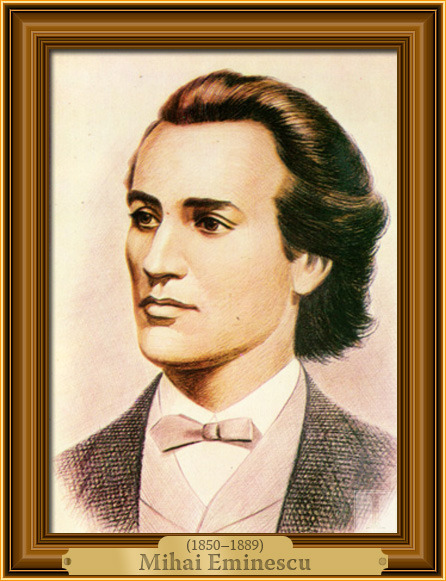


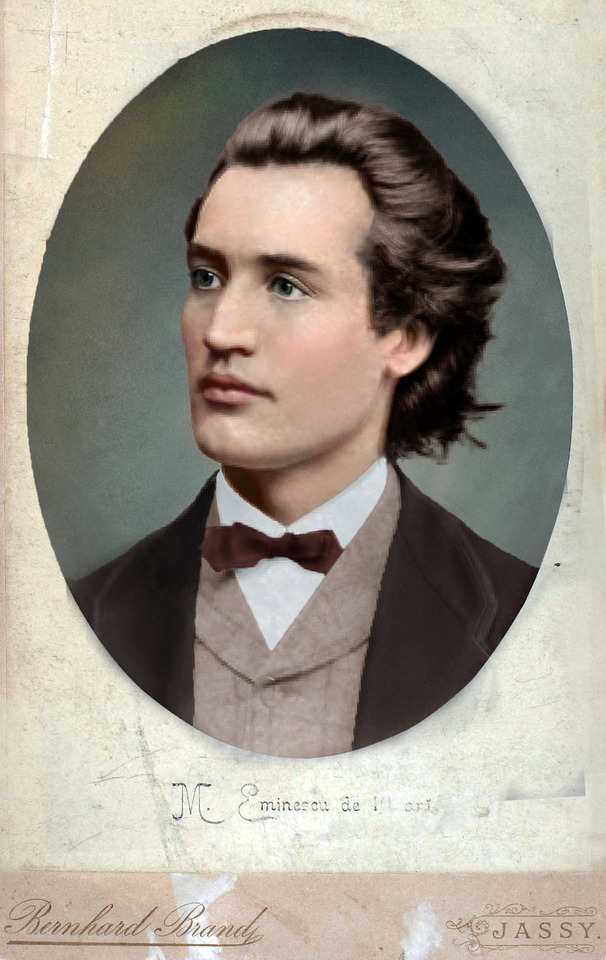
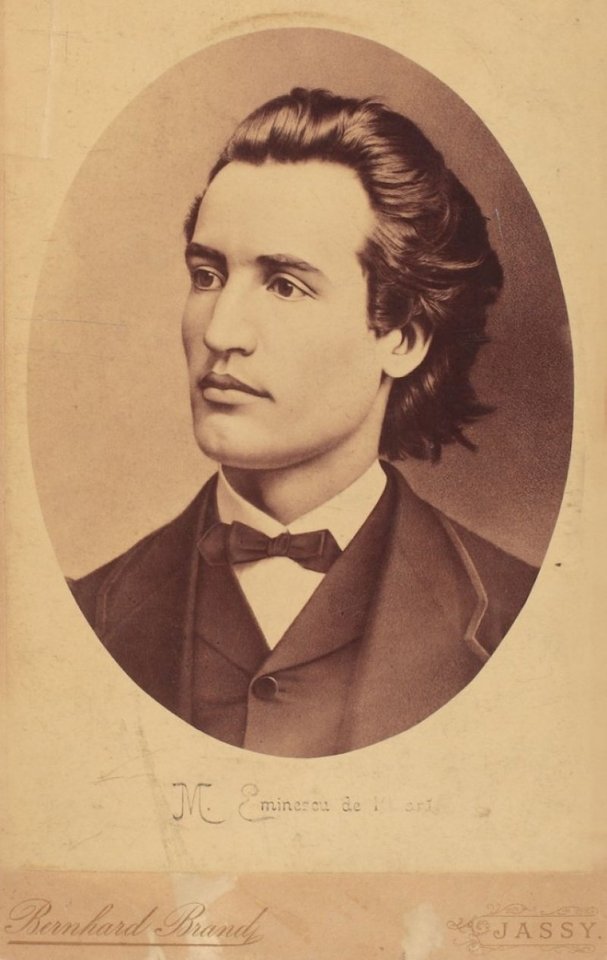
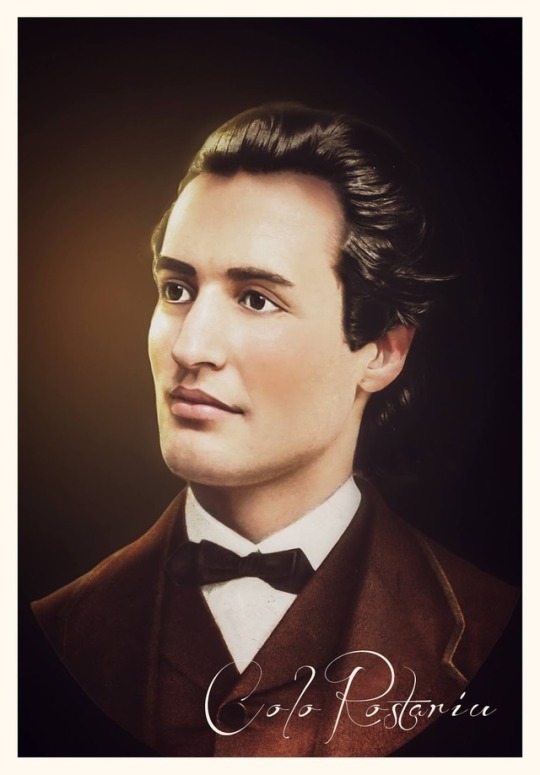
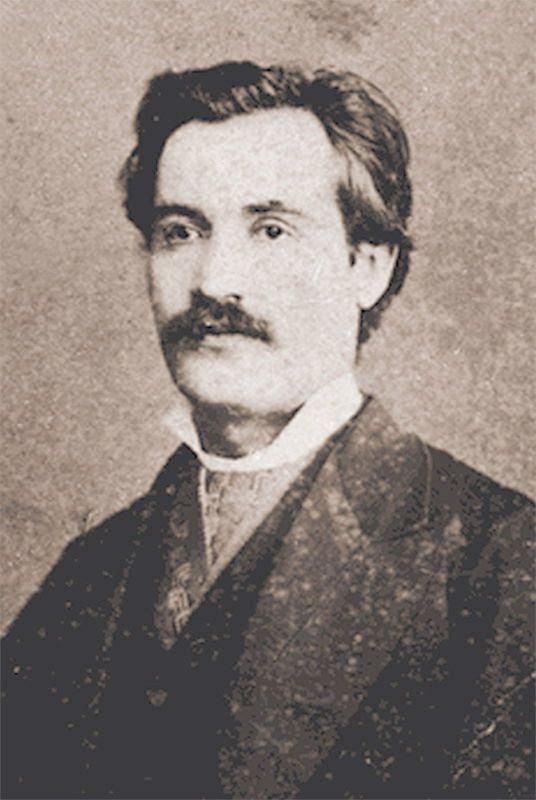

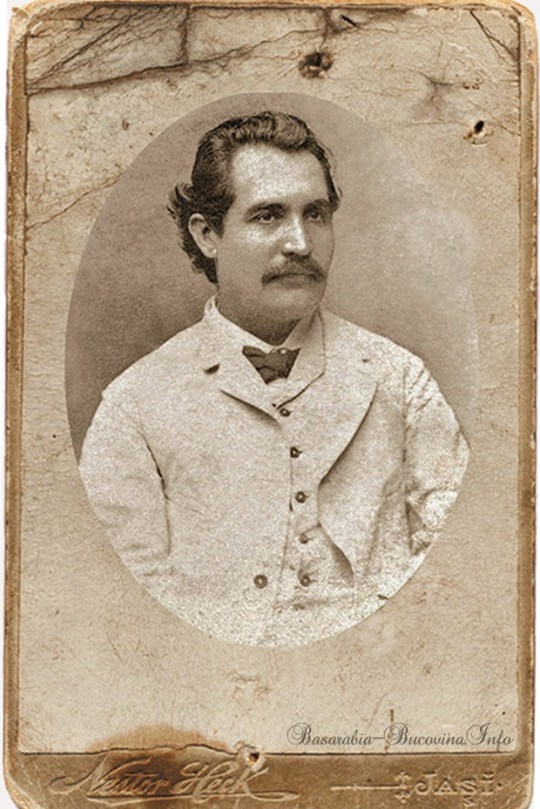

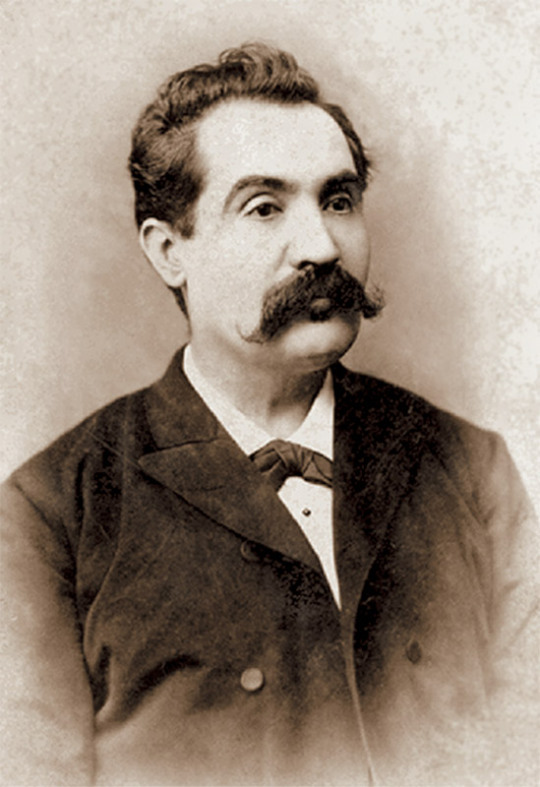


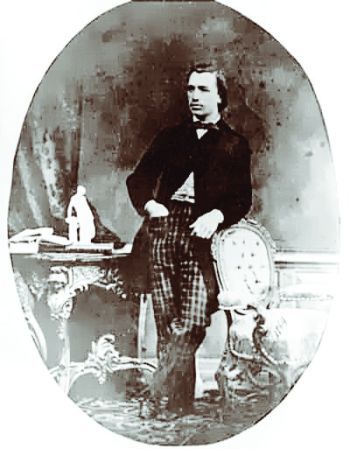


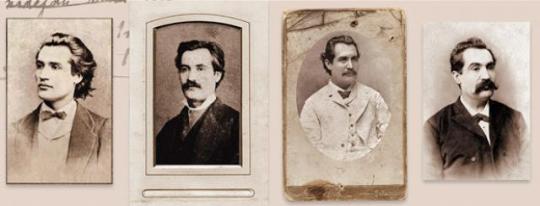

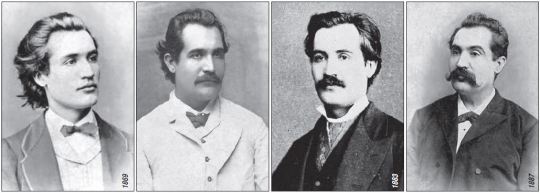




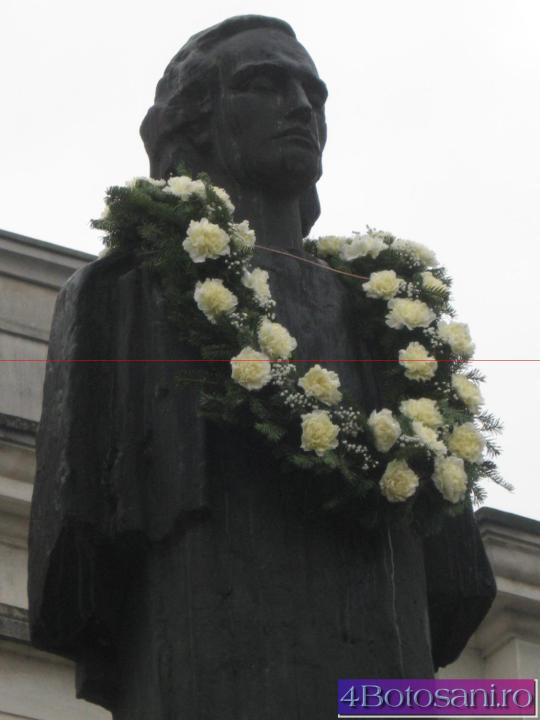


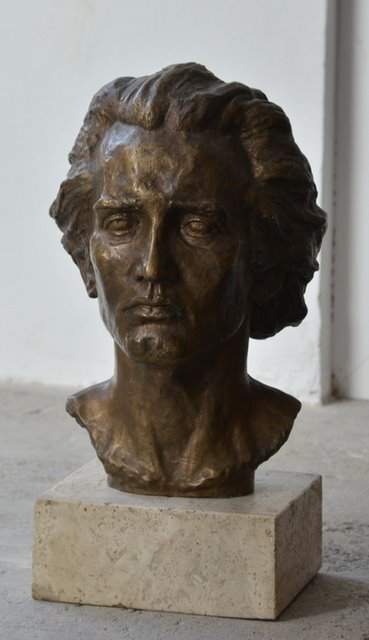



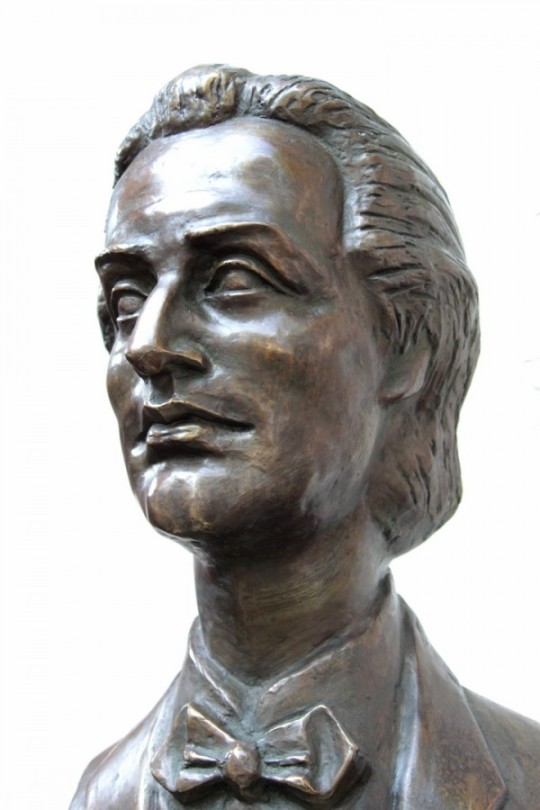





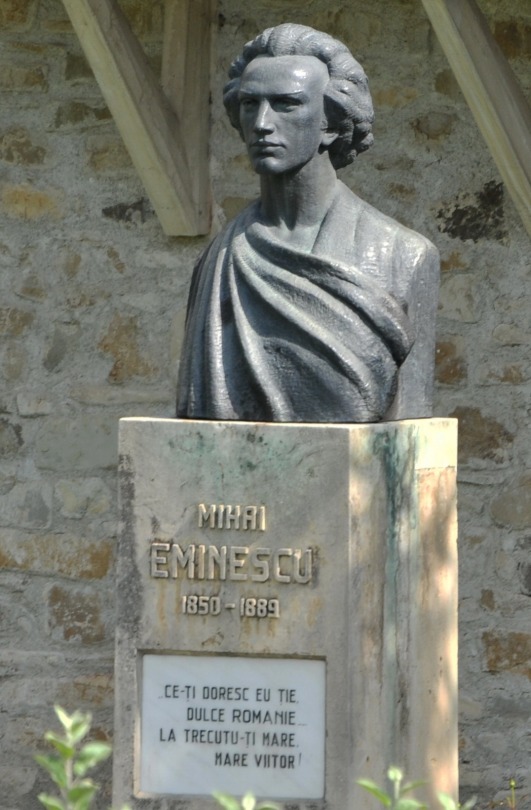





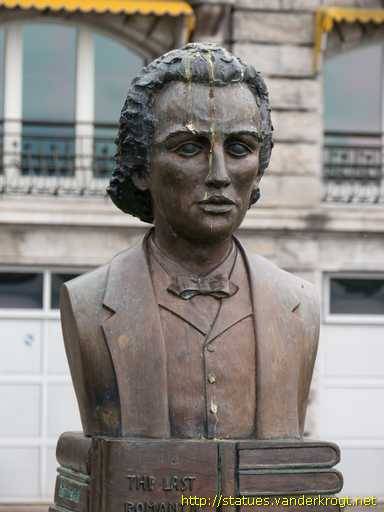
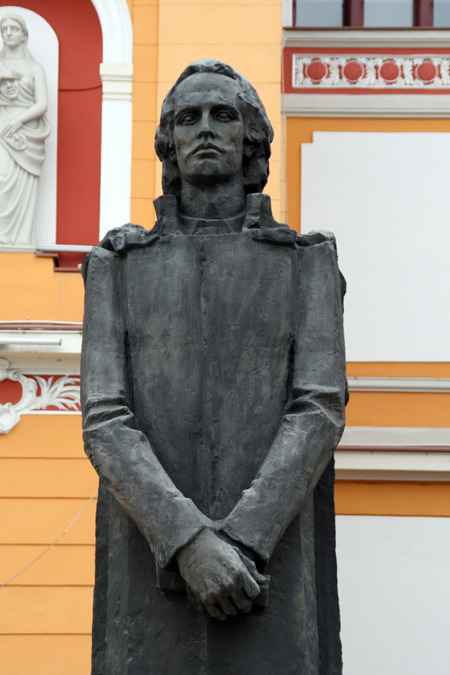



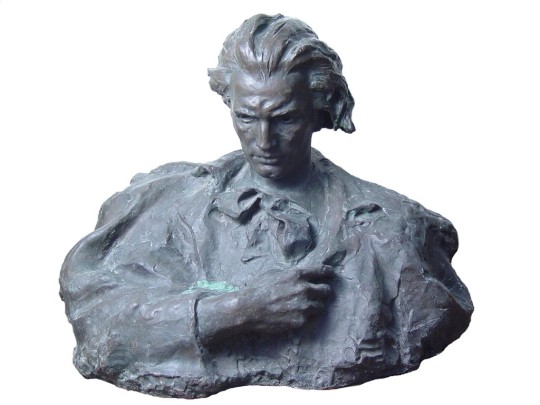


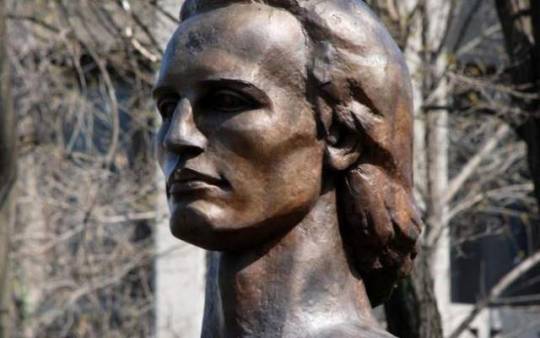
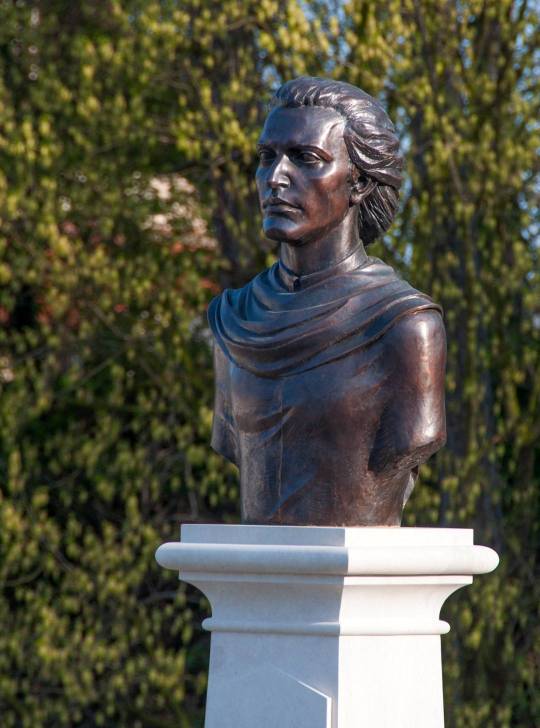





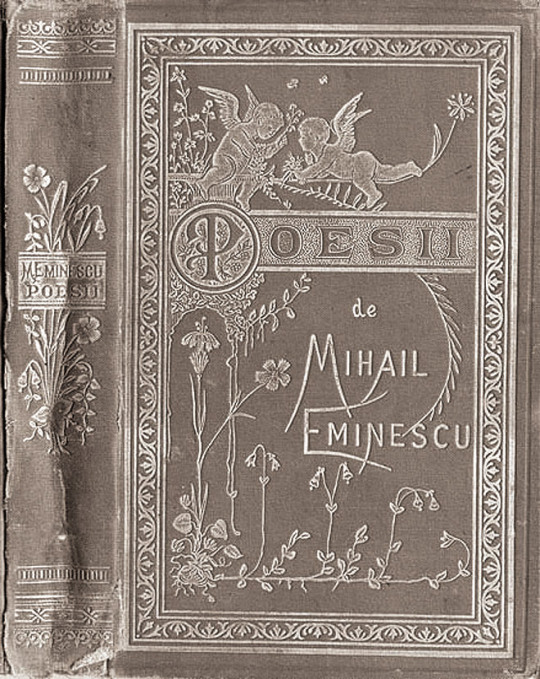
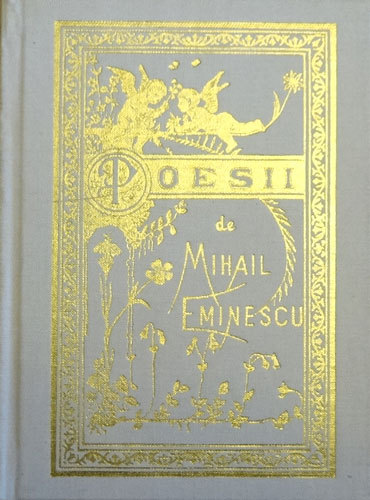


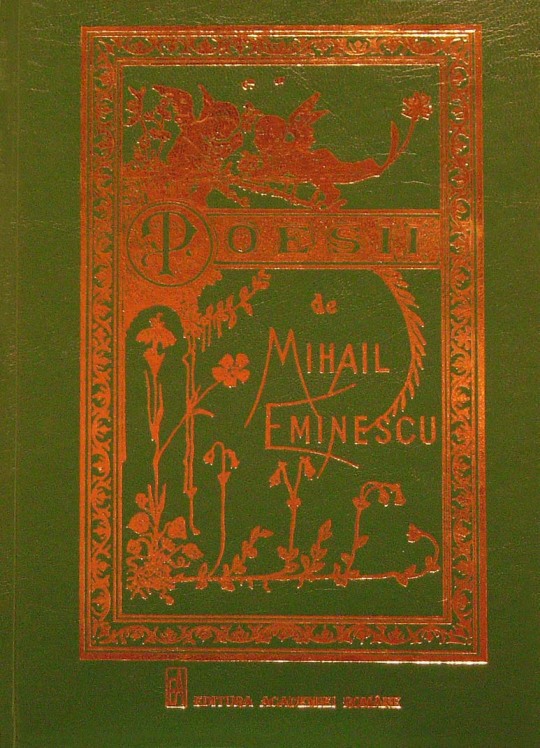
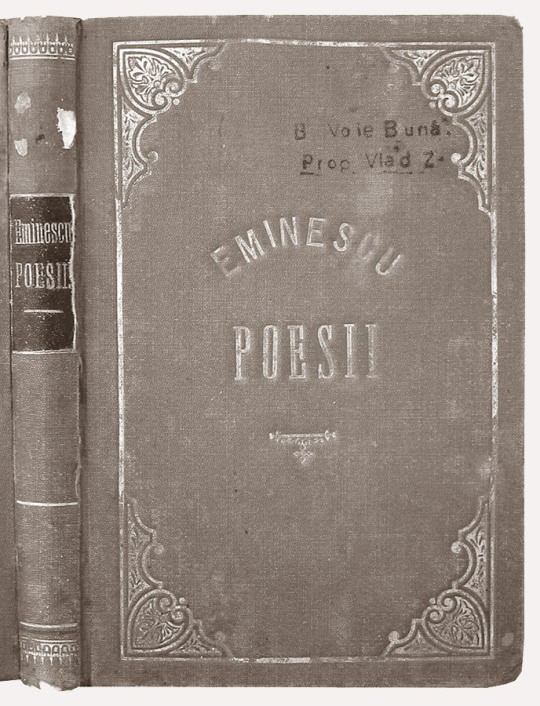

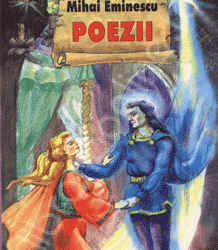

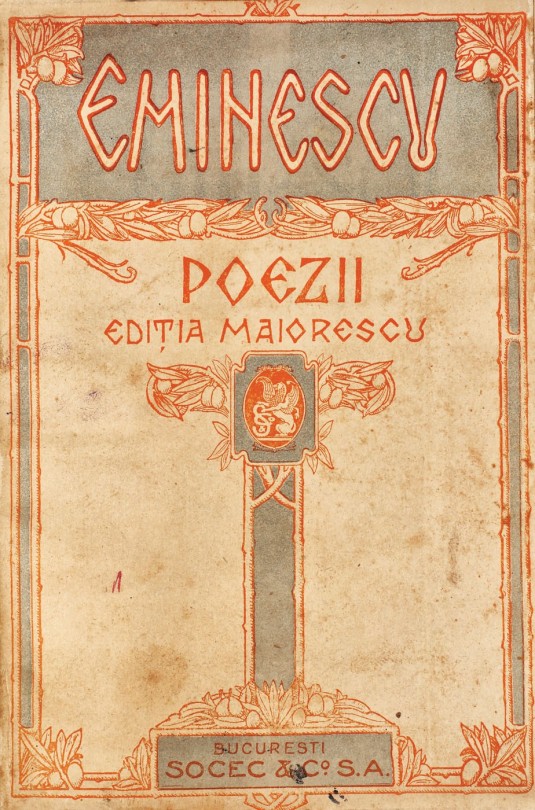









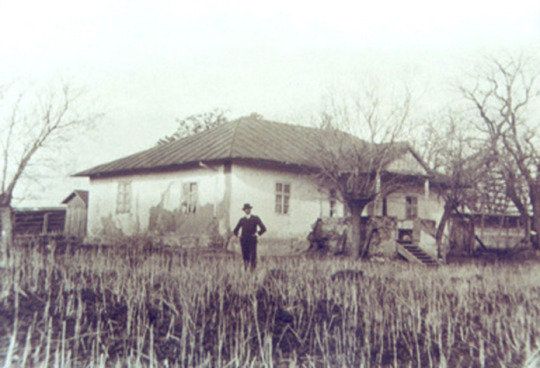
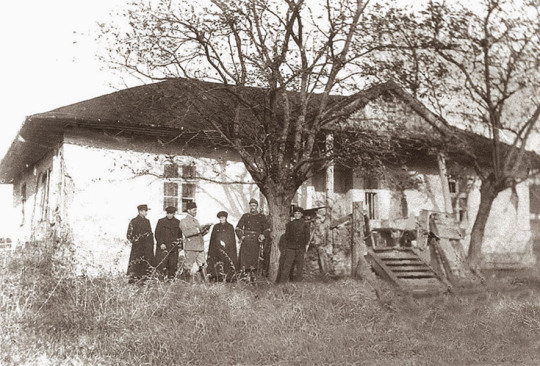

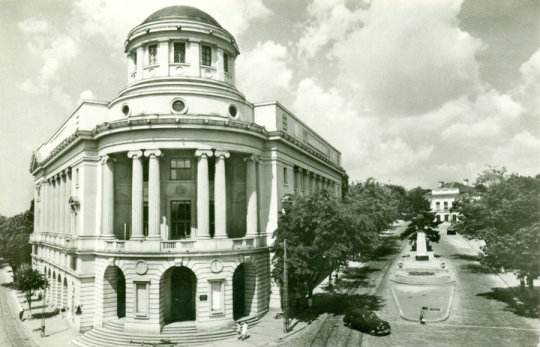



Mihai Eminescu
Mihai Eminescu (Romanian pronunciation: [miˈhaj emiˈnesku]; born Mihail Eminovici; 15 January 1850 Botoșani, Principality of Moldavia – 15 June 1889 Bucharest, Kingdom of Romania) was a Romantic poet, novelist and journalist, often regarded as the most famous and influential Romanian poet. Eminescu was an active member of the Junimea literary society and worked as an editor for the newspaper Timpul ("The Time"), the official newspaper of the Conservative Party (1880–1918). His poetry was first published when he was 16 and he went to Vienna to study when he was 19. The poet's manuscripts, containing 46 volumes and approximately 14,000 pages, were offered by Titu Maiorescu as a gift to the Romanian Academy during the meeting that was held on 25 January 1902. Notable works include Luceafărul (The Vesper/The Evening Star/The Lucifer/The Daystar), Odă în metru antic (Ode in Ancient Meter), and the five Letters (Epistles/Satires). In his poems he frequently used metaphysical, mythological and historical subjects.
His father was Gheorghe Eminovici from Călinești, a Moldavian village in Suceava county, Bucovina, which was then part of the Austrian Empire (while his father came from Banat). He crossed the border into Moldavia, settling in Ipotești, near the town of Botoșani. He married Raluca Iurașcu, an heiress of an old aristocratic Moldavian family. In a Junimea register, Eminescu wrote down his birthday date as 22 December 1849, while in the documents Cernăuți Gymnasium, where Eminescu studied, his birthday date is 14 December 1849. Nevertheless, Titu Maiorescu, in his work Eminescu and His Poems (1889) quoted N. D. Giurescu's research and adopted his conclusion regarding the date and place of Mihai Eminescu's birth, as being 15 January 1850, in Botoșani. This date resulted from several sources, amongst which there was a file of notes on christenings from the archives of the Uspenia (Domnească) Church of Botoșani; inside this file, the date of birth was "15 January 1850" and the date of christening was the 21st of the same month. The date of his birth was confirmed by the poet's elder sister, Aglae Drogli, who affirmed that the place of birth was the village of Ipotești.
Mihail (as he appears in baptismal records) or Mihai (the more common form that he used) was born in Botoșani, Moldavia. He spent his early childhood in Botoșani and Ipotești, in his parents' family home. From 1858 to 1866 he attended school in Cernăuți. He finished 4th grade as the 5th of 82 students, after which he attended two years of gymnasium.
The first evidence of Eminescu as a writer is in 1866. In January of that year Romanian teacher Aron Pumnul died and his students in Cernăuţi published a pamphlet, Lăcrămioarele învățăceilor gimnaziaști (The Tears of the Gymnasium Students) in which a poem entitled La mormântul lui Aron Pumnul (At the Grave of Aron Pumnul) appears, signed "M. Eminovici". On 25 February his poem De-aș avea (If I Had) was published in Iosif Vulcan's literary magazine Familia in Pest. This began a steady series of published poems (and the occasional translation from German). Also, it was Iosif Vulcan, who disliked the Slavic source suffix "-ici" of the young poet's last name, that chose for him the more apparent Romanian "nom de plume" Mihai Eminescu.
In 1867, he joined Iorgu Caragiale's troupe as a clerk and prompter; the next year he transferred to Mihai Pascaly's troupe. Both of these were among the leading Romanian theatrical troupes of their day, the latter including Matei Millo and Fanny Tardini-Vlădicescu (ro). He soon settled in Bucharest, where at the end of November he became a clerk and copyist for the National Theater. Throughout this period, he continued to write and publish poems. He also paid his rent by translating hundreds of pages of a book by Heinrich Theodor Rotscher, although this never resulted in a completed work. Also at this time he began his novel Geniu pustiu (Wasted Genius), published posthumously in 1904 in an unfinished form.
On 1 April 1869, he was one of the co-founders of the "Orient" literary circle, whose interests included the gathering of Romanian folklore and documents relating to Romanian literary history. On 29 June, various members of the "Orient" group were commissioned to go to different provinces. Eminescu was assigned Moldavia. That summer, he quite by chance ran into his brother Iorgu, a military officer, in Cișmigiu Gardens, but firmly rebuffed Iorgu's attempt to get him to renew ties to his family.
Still in summer 1869, he left Pascaly's troupe and traveled to Cernăuţi and Iaşi. He renewed ties to his family; his father promised him a regular allowance to pursue studies in Vienna in the fall. As always, he continued to write and publish poetry; notably, on the occasion of the death of the former ruler of Wallachia, Barbu Dimitrie Știrbei, he published a leaflet, La moartea principelui Știrbei ("On the Death of Prince Știrbei").
From October 1869 to 1872 Eminescu studied in Vienna. Not fulfilling the requirements to become a university student (as he did not have a baccalaureate degree), he attended lectures as a so-called "extraordinary auditor" at the Faculty of Philosophy and Law. He was active in student life, befriended Ioan Slavici, and came to know Vienna through Veronica Micle; he became a contributor to Convorbiri Literare (Literary Conversations), edited by Junimea (The Youth). The leaders of this cultural organisation, Petre P. Carp, Vasile Pogor, Theodor Rosetti, Iacob Negruzzi and Titu Maiorescu, exercised their political and cultural influence over Eminescu for the rest of his life. Impressed by one of Eminescu's poems, Venere şi Madonă (Venus and Madonna), Iacob Negruzzi, the editor of Convorbiri Literare, traveled to Vienna to meet him. Negruzzi would later write how he could pick Eminescu out of a crowd of young people in a Viennese café by his "romantic" appearance: long hair and gaze lost in thoughts.
In 1870 Eminescu wrote three articles under the pseudonym "Varro" in Federaţiunea in Pest, on the situation of Romanians and other minorities in the Austro-Hungarian Empire. He then became a journalist for the newspaper Albina (The Bee) in Pest. From 1872 to 1874 he continued as a student in Berlin, thanks to a stipend offered by Junimea.
From 1874 to 1877 he worked as director of the Central Library in Iași, substitute teacher, school inspector for the counties of Iași and Vaslui, and editor of the newspaper Curierul de Iași (The Courier of Iaşi), all thanks to his friendship with Titu Maiorescu, the leader of Junimea and rector of the University of Iași. He continued to publish in Convorbiri Literare. He became a good friend of Ion Creangă, a writer, whom he convinced to become a writer and introduced to the Junimea literary club.
In 1877 he moved to Bucharest, where until 1883 he was first journalist, then (1880) editor-in-chief of the newspaper Timpul (The Time). During this time he wrote Scrisorile, Luceafărul, Odă în metru antic etc. Most of his notable editorial pieces belong to this period, when Romania was fighting the Ottoman Empire in the Russo-Turkish War of 1877–1878 and throughout the diplomatic race that eventually brought about the international recognition of Romanian independence, but under the condition of bestowing Romanian citizenship to all subjects of Jewish faith. Eminescu opposed this and another clause of the Treaty of Berlin: Romania's having to give southern Bessarabia to Russia in exchange for Northern Dobrudja, a former Ottoman province on the Black Sea.
The 1880s were a time of crisis and deterioration in the poet's life, culminating with his death in 1889. The details of this are still debated.
From 1883 - when Eminescu's crisis and deviant behaviors became evident - until 1886, the poet was treated in Austria and Italy, by specialists that managed to put him on his feet, as testified by his good friend, writer Ioan Slavici. In 1886, Eminescu suffered a nervous breakdown and was treated by Romanian doctors, in particular Julian Bogdan and Panait Zosin. Immediately diagnosed with syphilis, after being hospitalized in a nervous diseases hospice within the Neamț Monastery, the poet is treated with mercury. Firstly, massages in Botoșani, applied by Dr. Itszak, and then in Bucharest at Dr. Alexandru A. Suțu's sanatorium, where between February–June 1889 he was injected with mercuric chloride. Professor Doctor Irinel Popescu, corresponding member of the Romanian Academy and president of the Academy of Medical Sciences of Romania, states that Eminescu died because of mercury poisoning. He also says that the poet was "treated" by a group of incompetent doctors and held in misery, which also shortened his life. Mercury was prohibited as treatment of syphilis in Western Europe in the 19th century, because of its adverse effects.
Mihai Eminescu died at 4 am, on 15 June 1889 at the Caritas Institute, a sanatorium run by Dr. Suțu and located on Plantelor Street Sector 2, Bucharest. Eminescu's last wish was a glass of milk, which the attending doctor slipped through the metallic peephole of the "cell" where he spent the last hours of his life. In response to this favor he was said to have whispered, "I'm crumbled". The next day, on 16 June 1889 he was officially declared deceased and legal papers to that effect were prepared by doctors Suțu and Petrescu, who submitted the official report. This paperwork is seen as being ambiguous, because the poet's cause of death is not clearly stated and there was no indication of any other underlying condition that may have so suddenly resulted in his death. In fact both the poet's medical file and autopsy report indicate symptoms of a mental and not physical disorder. Moreover, at the autopsy performed by Dr. Tomescu and then by Dr. Marinescu from the laboratory at Babeș-Bolyai University, the brain could not be studied, because a nurse inadvertently forgot it on an open window, where it quickly decomposed.
One of the first hypotheses that disagreed with the post mortem findings for Eminescu's cause of death was printed on 28 June 1926 in an article from the newspaper Universul. This article forwards the hypothesis that Eminescu died after another patient, Petre Poenaru, former headmaster in Craiova, hit him in the head with a board.
Dr. Vineș, the physician assigned to Eminescu at Caritas argued at that time that the poet's death was the result of an infection secondary to his head injury. Specifically, he says that the head wound was infected, turning into an erysipelas, which then spread to the face, neck, upper limbs, thorax, and abdomen. In the same report, cited by Nicolae Georgescu in his work, Eminescu târziu, Vineș states that "Eminescu's death is not due to head trauma occurred 25 days earlier and which had healed completely, but is the consequence of an older endocarditis (diagnosed by late professor N. Tomescu)".
Contemporary specialists, primarily physicians who have dealt with the Eminescu case, reject both hypotheses on the cause of death of the poet. According to them, the poet died of cardio-respiratory arrest caused by mercury poisoning. Eminescu was wrongly diagnosed and treated, aiming his removal from public life, as some eminescologists claim. Eminescu was diagnosed since 1886 by Dr. Julian Bogdan from Iași as syphilitic, paralytic and on the verge of dementia due to alcohol abuse and syphilitic gummas emerged on the brain. The same diagnosis is given by Dr. Panait Zosin, who consulted Eminescu on 6 November 1886 and wrote that patient Eminescu suffered from a "mental alienation", caused by the emergence of syphilis and worsened by alcoholism. Further research showed that the poet was not suffering from syphilis.
youtube
youtube
0 notes
Text
Pierrot and Harlequin, Mardi Gras by Paul Cézanne, 1888
Origins
Atellana comedy
Plautus
Passion Plays
Arlecchino, as we know him, is a stock character dating back to seventeenth-century Commedia dell’arte. He also has origins in the atellana farce of Roman antiquity (4th century BCE). In fact, the use of stock characters is a feature of the atellana. Moreover Commedia dell’arte characters could be borrowed from commedia erudita. Molière‘s (1622 – 1673) Miser or L’Avare (1668) was borrowed from Plautus‘ (c. 254 – 184 BCE) Auluraria (The Pot of Gold).
However, in European countries, comedy has more immediate origins. It emerged as a brief mirthful form, a mere interlude, during lengthy medieval Passion Plays, Mystery Plays and Miracle Plays. Passion Plays were extremely long, so interludes, comedy, were inserted between the “acts” to keep the audience entertained. These became popular and eventually secularized the religious plays. However, Passion Plays have not disappeared totally. For instance, the Oberammergau Passion Play (Bavaria) has been performed since 1634, keeping alive the birthplace of farces and tom-foolery.
Harlequin
Hellequin, Herla, Elking
Tirstano Martinelli, the first Harlequin
Zanni (servants)
British harlequinades (eighteenth-century)
It would appear that the commedia dell’arte’s Arlecchino (Harlequin) was also culled out of Passion Plays, where he was a devil: Hellequin, Herla, Erlking and other spellings and names. The origin of the name is attested by 11th-century chronicler Orderic Vitalis (1075 – c. 1142). The name Harlequin was picked up in France by Tristano Martinelli, the first actor to play Harlequin. (See Harlequin, Wikipedia.)[i] Tristano played the role of Harlequin from the 1580s until his death in 1630. At this point, Harlequin became a stock character, an archetype, in the Commedia dell’arte. Given that the success of the Commedia dell’arte performances depended on an actor’s skills, we can presume Tristano was a fine comedian.
Arlecchino (Arlequin, Harlequin) is a zanno, a servant whose function was called Sannio in the Atellana, Roman farcical comedies. There were many zanni, (Brighella, Pulchinello, Mezzetin, Truffadino, Beltrame, and others). Their role was to help the young lovers of comedy overcome obstacles to their marriage. This plot is consistent with the “all’s well that ends well” of all comedies. We have already met the blocking characters of the commedia dell’arte. Pantalone is the foremost. But his role may be played by Il Dottore, or Il Capitano, or some other figure.
Although a zanno has the same function from play to play, as do blocking characters, the alazôn, zanni otherwise differ from one another. For instance, Arlecchino, a zanno, is different from Pierrot. Harlequin is not the growingly sadder clown of Romantic and pantomimic incarnations. He is not Jean-Gaspard Deburau‘s Battiste, nor is he Jean-Louis Barrault‘s Baptiste. He is the clever, nimble, but clownish zanno.
Harlequin’s Characteristics
Arlecchino is, in fact, the most astute and nimble of zanni or servants. He is an acrobat. This is one of his main attributes. Moreover, he wears a costume of his own, another distinguishing factor.
At first, the Harlequin wore a black half mask and a somewhat loose costume on which diamond-shaped coloured patches had been sewn. He would then wear a tight-fitting chequered costume mixing two or several colours. Paul Cézanne‘s (1839–1906) Harlequin is dressed in black and red, but Pablo Picasso changes the colours worn by his numerous Harlequins.
Harlequin leaning (Harlequin accoudé) by Picasso, 1901
Les Deux Saltimbanques (Two Acrobats) by Picasso, 1901
Arlequin’s Progress
the sixteenth and seventeenth centuries in France
Blois
I Gelosi
Petit-Bourbon
Scenario
In the sixteenth and seventeenth centuries, the Italians were very popular at the French court and so was Harlequin. As of 1570-71, Commedia dell’arte actors were summoned by the King of France to perform in royal residences. In 1577, the Italians were called to Blois by Henri III during an assembly of Parliament. The famous I Gelosi (The Jealous Ones; 1569-1604) “was the first troupe to be patronized by nobility: in 1574 and 1577 they performed for the king of France.” (See I Gelosi, Wikipedia.) La Commedia dell’arte most famous performers in seventeenth-century France were Isabella and Francesco Andreini. Isabella died in childbirth (1604), but her son’s troupe, the Compagnia dei Fedeli would be invited to perform at Louis XIII’s court.
In short, in the seventeenth century, Harlequin was in France. In fact, at one point, les Italiens shared quarters with Molière at the Petit-Bourbon, a theatre. Matters changed in 1697, when the commedia performed a “fausse prude” (false prude) scenario that offended Madame de Maintenon (27 November 1635 – 15 April 1719), Louis XIV‘s second wife. In French seventeenth-century representations, Pierrot loved Columbine who loved Harlequin (Arlecchino).
Commedia dell’arte troupe, probably depicting Isabella Andreini and the Compagnia dei Gelosi, oil painting by unknown artist, c. 1580; in the Musée Carnavalet, Paris (Photo credit: Britannica)
Pulcinella, by Maurice Sand
John Rich, as Harlequin
British Harlequinades: Pantomime & Slapstick
pantomime
slapstick
Pulcinella (Polichinelle, Punchinella)
“Punch and Judy”
a new scenario
In eighteenth-century Britain, John Rich[ii] (1682 – 26 November 1761, the son of one of the owners of Drury Lane Theatre and the founder of Covent Garden Theatre (Royal Opera House) performed the above-mentioned harlequinades in which “he combined a classical fable with a grotesque story in Commedia dell’arte style involving Harlequin and his beloved Columbine.”[iii] In Britain, harlequinades, became “that part of a pantomime in which the Harlequin and clown play the principal parts.”[iv] Harlequinades also contained a Transformation Scene.[v] Associated with the British Harlequin are pantomime, slapstick comedy and puppetry. Yet, this British Harlequin is rooted in the sixteenth-century Commedia dell’arte. It seems that the best of these English clowns was played by Joseph Grimaldi (18 December 1778 – 31 May 1837).
However, British harlequinades also featured Pulcinella who originated in the seventeenth-century Commedia dell’arte but had roots in Atellana comedy and was a stock character in Neapolitan puppetry. Given his ancestry, Pulcinella could and did inspire Mister Punch of “Punch and Judy,” a puppet show. (See Harlequin, Wikipedia.)
British harlequinades differ from continental versions of Arlequin (FR) or Arlecchino.
“First, instead of being a rogue, Harlequin became the central figure and romantic lead. Secondly, the characters did not speak; this was because of the large number of French performers who played in London, following the suppression of unlicensed theatres in Paris.” (See Harlequin, Wikipedia.)
It seems harlequinades were played in “Italian Night Scenes,” following a main and serious performance. In their scenario, “Italian Night Scenes” focused on Harlequin who loved Columbine but was opposed by a greedy Pantalone, Columbine’s father. Pantalone would chase the young lovers “in league with the mischievous Clown; and the servant, Pierrot, usually involving chaotic chase scenes with a policeman.” Moreover the “night scenes” started to grow longer to the detriment of the previous performance. (See Harlequinade, Wikipedia.)
In other words, in Britain, Harlequin out-clowned Pierrot. As for Pulcinella, although he had appeared, he could not out-clown Harlequin. Furthermore Pulcinella grew into Punch (Punchinella) and, as mentioned above, he migrated to the land of puppetry. But above all, British harlequinades were hilarious: genuine slapstick. Moreover they were pantomimic as would be Jean-Gaspard Debureau‘s (Battiste) as well as Jean-Louis Barrault‘s (Baptiste). Baptiste is nimble and precise, but in England, the chaotic “chase” had begun. The last harlequinade was played in 1939.
The Ballets Russes, Stravinsky, Picasso
Sergei Diaghilev‘s enormously successful Ballets Russes were inspired by the commedia dell’arte. Diaghilev commissioned a ballet version of Pulcinella, composed by Igor Stravinsky and choreographed by Russian-born Léonide Massine. Furthermore, Pablo Picasso, who had already painted characters from the Commedia dell’arte, Harlequin in particular, designed the original costumes and sets for the ballet (1920).
Harlequin and other members of the Commedia are associated with Pierre de Marivaux (4 February 1688 – 12 February 1763). Marivaux wrote many plays for the Comédie-Française and the Comédie-Italienne. But we are skipping Marivaux’s polished Arlequin because the discussion would be too long and too complex. We will instead look at images, Picasso’s in particular, and provide the names of innamorati, lazzi and zanni, but that will be my last post on the Commedia dell’ arte itself.
My best regards to all of you.
Colombine
Arlequin poli par l’amour, Marivaux
RELATED ARTICLES
Leo Rauth’s “fin de siècle” Pierrot (27 June 2014)
Pantalone: la Commedia dell’arte (20 June 2014)
Sources and Resources
Commedia dell’arte (shane-arts)
Development of Pantomime (The)
Harlequin everywhere you look (thoughtsontheatre)
Masques et bouffons (comédie italienne), 1860. (See Maurice Sand, in Wikipedia.) Maurice Sand’s book is available online at Masques et bouffons (comédie italienne)
Marivaux’s Arlequin poli par l’amour (EN)
____________________
[i] “Arlecchino,” Phyliss Hartnoll, ed. The Oxford Companion to the Theatre, 3rd edition (Oxford University Press, 1967 [1951])
[ii] “John Rich”. Encyclopædia Britannica. Encyclopædia Britannica Online. Encyclopædia Britannica Inc., 2014. Web. 28 Jun. 2014 <http://www.britannica.com/EBchecked/topic/502381/John-Rich>.
[iii] Oxford English Dictionary
[iv] Early Pantomime (Victoria and Albert Museum, London)
[v] The “batte,” Harlequin’s stick, became a magic wand used by a fairy to effect a change of scenery or transform the characters. It is called “trickwork.”
“commedia erudita”. Encyclopædia Britannica. Encyclopædia Britannica Online. Encyclopædia Britannica Inc., 2014. Web. 29 Jun. 2014 <http://www.britannica.com/EBchecked/topic/127767/commedia-erudita>.
“Compagnia dei Gelosi”. Encyclopædia Britannica. Encyclopædia Britannica Online. Encyclopædia Britannica Inc., 2014. Web. 28 Jun. 2014 <http://www.britannica.com/EBchecked/topic/228004/Compagni-de-Gelosi>
“Harlequin”. Encyclopædia Britannica. Encyclopædia Britannica Online. Encyclopædia Britannica Inc., 2014. Web. 28 Jun. 2014 <http://www.britannica.com/EBchecked/topic/255421/Harlequin>.
“Passion play”. Encyclopædia Britannica. Encyclopædia Britannica Online. Encyclopædia Britannica Inc., 2014. Web. 28 Jun. 2014 <http://www.britannica.com/EBchecked/topic/445807/Compagnie-Passion-Play>
Seated Fat Clown, by Pablo Picasso, 1905
Arlequin et Colombine
© Micheline Walker
June 30, 2014
WordPress
Arlecchino, Arlequin, Harlequin Origins Atellana comedy Plautus Passion Plays Arlecchino, as we know him, is a stock character dating back to seventeenth-century
#British harlequinades#I Gelosi#John Rich#pantomime#Passion Plays#Pulcinella#Punch and Judy#slapstick comedy#Tristano Martinelli#zanni
0 notes
Text
Jake LaMotta, a Portrait of Resilience
In 1980, Martin Scorsese released the brilliant motion picture Raging Bull, based on Jake LaMotta's 1970 memoir of the same name. As with the memoirs of most athletes—particularly those who take punches to the head for the first 30 years of their lives—the book was ghostwritten and was a fairly romantic account of LaMotta's whirlwind career. Scorsese's film won two Academy Awards, including Best Actor for Robert De Niro's turn as LaMotta, and has been referenced constantly in pop culture since its release. But some charge that Raging Bull is responsible for LaMotta being remembered as more significant to boxing history than his accomplishments merit. The news of Jake LaMotta's passing on Tuesday has led to a number of articles amid the obits assessing his place in boxing's canon of heroes and antiheroes. In a sport where everyone has their own "top ten" of everything, LaMotta's significance is a little more nuanced than a simple number of belts won or titles defended.
LaMotta was middleweight champion of the world from June 1949 to February 1951, having won the belt from Marcel Cerdan. He managed a handful of victories before losing the strap to Sugar Ray Robinson. There isn't much footage of LaMotta in action, and what there is isn't pretty. When Nat Fleischer listed his top ten middleweights in 50 Years at Ringside (written when there had been only 21 middleweight champions), Robinson made the top five and LaMotta's name didn't even appear in the book. Even the way in which LaMotta won the title came with an asterisk to many. The Frenchman Cerdan injured his left arm in the first round of their contest but survived to the tenth despite being unable to throw punches off that side. Cerdan was granted a rematch but died in a plane crash just a few months after his first meeting with LaMotta, leaving all the questions unanswered.
Before Raging Bull, LaMotta's name was more important to many fight fans for what he said at hearings before the Senate Subcommittee on Antitrust and Monopoly in 1960. During the subcommittee's investigation into mob influence on boxing—particularly the connections of Frankie Carbo and Blinky Palermo—LaMotta confessed to throwing a bout against Billy Fox in November 1947. The New York State Athletic Commission had been suspicious of the outcome at the time, as LaMotta had never been stopped before. He would later say that he made sure to lose more one-sidedly than the mob had hoped just to make it clear that something was up. The commission withheld both fighters' purses, but LaMotta insisted that he had been fighting with a severe injury until the NYSAC gave up the chase.
Allegedly LaMotta had passed on taking a dive against Tony Janiro in June 1947 for $100,000, instead opting to work the fix against Fox in exchange for the mob organizing a shot at the middleweight crown down the road. Few would approve this moral choice, but at a time when mob-owned fighters were being worked into the best opportunities, it was what LaMotta had to do, and he got the title shot as a result. Though not before Marcel Cerdan's American representatives allegedly extorted another $20,000 out of LaMotta in "fees" for the fight—a fight for which his purse would amount to only $19,000!
But the purpose of Scorsese's Raging Bull never seemed to be to elevate Jake to something more than he was. The Jake LaMotta in that film (played by Robert De Niro) is a deeply flawed human being with a self-destructive streak but some legitimate fighting talent and a resolute stubbornness under fire. LaMotta may not be an all-time great in terms of accolades, but his story was a remarkable one for everything about fighting that isn't in the numbers and the belts.
LaMotta was known as a fighter with a great gas tank and a willingness to push hard through each round of a contest. He wasn't the biggest hitter, he wasn't slick on his feet or particularly creative with his set-ups or counters, but he was always there and there was seldom a minute of any fight that he wasn't working. When he defended his middleweight title against Laurent Dauthuille in September 1950, LaMotta was down on the scorecards by Round 15 and needed the knockout to win. LaMotta spent the first two minutes of the round with his hands down by his sides, swaying into the ropes and bouncing back off them as if completely spent. When he thought he had one minute remaining in the fight, LaMotta surged forward and put Dauthuille on the canvas. Dauthuille was counted out with just 13 seconds remaining in the fight. That was LaMotta summed up: always there.
The one number that does matter when recalling LaMotta's accomplishments is the "and one" that he beat onto Sugar Ray Robinson's record in their second fight, February 1943. After his first meeting with the Bronx Bull back in 1942, Robinson decided that he would have been "safer in a bull ring" that night, concluding: "I got the decision but I learned that Jake LaMotta was some animal." In their second meeting, LaMotta showed even more aggression, sending Robinson through the ropes and onto the apron in the eighth round and winning the decision. Robinson had accomplished a spotless record of 40-0 as a master boxer and puncher. LaMotta wasn't half the boxer, and nothing special as hitters go, but he had spoiled all of that with his grit. The magnitude of LaMotta's achievement can only be realized when one considers that Robinson proceeded to become the welterweight and middleweight champion of the world, and would run his record to 128-1 before he suffered another defeat. Robinson and LaMotta met a total of five times by 1945.
Their sixth and final meeting came on St. Valentines Day, 1951. It became known as the Valentines Day Massacre, and it is their only bout of which we have film. Robinson was the reigning welterweight champion, challenging for LaMotta's middleweight crown. Knowing his reputation as the Bronx Bull, a viewer might be pleasantly surprised to see LaMotta out-landing the dancing master in the early going and, most curiously, out-jabbing him. LaMotta was slowing down but he looked wily and sharp through the first two rounds that night. He would crouch low to avoid Robinson's usual left-circling jabs, then come up with a jab or double jab of his own and catch Robinson on the extreme end of it.
Robinson's jab was a constant annoyance, but it was his blistering hand speed and heavy counter punches that wilted LaMotta. Wide rights to the body and counter uppercuts as Jake lunged in slowed the champion through ten grueling rounds. In the 11th round, LaMotta rallied to hammer Robinson along the ropes, but the challenger survived and by the end of Round 12 LaMotta could barely raise his hands.
In the 13th round, LaMotta was blasted along the ropes and referee Frank Sikora jumped in to wave the fight off. As was made famous by Raging Bull, through their six meetings Robinson never knocked LaMotta down.
While Robinson went on to drop and recapture the middleweight title a handful of times, LaMotta's career was winding down. He won just five of his final ten fights, going up to light heavyweight to test the waters there before calling it quits. By the time he retired, few rated him as a great champion, but he had always been a fan favorite and his turbulent path to the world title made excellent source material.
Whenever a celebrity passes away there is some sadness, but it is hard to feel robbed by a 95-year run. Jake had been the oldest living boxing world champion since 2006! Living to 95 would be an impressive feat for a man who never drank, never smoked, and certainly never got in the ring to be punched in the head for money. That Jake LaMotta could forge a reputation for absorbing punishment through the first half of his life, a love of the night life throughout, and still enjoy a peaceful retirement to near 100 years old is remarkable. But then, resilience was Jake LaMotta's identity.
Jake LaMotta, a Portrait of Resilience published first on http://ift.tt/2pLTmlv
0 notes
Text
Jake LaMotta, a Portrait of Resilience
In 1980, Martin Scorsese released the brilliant motion picture Raging Bull, based on Jake LaMotta’s 1970 memoir of the same name. As with the memoirs of most athletes—particularly those who take punches to the head for the first 30 years of their lives—the book was ghostwritten and was a fairly romantic account of LaMotta’s whirlwind career. Scorsese’s film won two Academy Awards, including Best Actor for Robert De Niro’s turn as LaMotta, and has been referenced constantly in pop culture since its release. But some charge that Raging Bull is responsible for LaMotta being remembered as more significant to boxing history than his accomplishments merit. The news of Jake LaMotta’s passing on Tuesday has led to a number of articles amid the obits assessing his place in boxing’s canon of heroes and antiheroes. In a sport where everyone has their own “top ten” of everything, LaMotta’s significance is a little more nuanced than a simple number of belts won or titles defended.
LaMotta was middleweight champion of the world from June 1949 to February 1951, having won the belt from Marcel Cerdan. He managed a handful of victories before losing the strap to Sugar Ray Robinson. There isn’t much footage of LaMotta in action, and what there is isn’t pretty. When Nat Fleischer listed his top ten middleweights in 50 Years at Ringside (written when there had been only 21 middleweight champions), Robinson made the top five and LaMotta’s name didn’t even appear in the book. Even the way in which LaMotta won the title came with an asterisk to many. The Frenchman Cerdan injured his left arm in the first round of their contest but survived to the tenth despite being unable to throw punches off that side. Cerdan was granted a rematch but died in a plane crash just a few months after his first meeting with LaMotta, leaving all the questions unanswered.
Before Raging Bull, LaMotta’s name was more important to many fight fans for what he said at hearings before the Senate Subcommittee on Antitrust and Monopoly in 1960. During the subcommittee’s investigation into mob influence on boxing—particularly the connections of Frankie Carbo and Blinky Palermo—LaMotta confessed to throwing a bout against Billy Fox in November 1947. The New York State Athletic Commission had been suspicious of the outcome at the time, as LaMotta had never been stopped before. He would later say that he made sure to lose more one-sidedly than the mob had hoped just to make it clear that something was up. The commission withheld both fighters’ purses, but LaMotta insisted that he had been fighting with a severe injury until the NYSAC gave up the chase.
Allegedly LaMotta had passed on taking a dive against Tony Janiro in June 1947 for $100,000, instead opting to work the fix against Fox in exchange for the mob organizing a shot at the middleweight crown down the road. Few would approve this moral choice, but at a time when mob-owned fighters were being worked into the best opportunities, it was what LaMotta had to do, and he got the title shot as a result. Though not before Marcel Cerdan’s American representatives allegedly extorted another $20,000 out of LaMotta in “fees” for the fight—a fight for which his purse would amount to only $19,000!
But the purpose of Scorsese’s Raging Bull never seemed to be to elevate Jake to something more than he was. The Jake LaMotta in that film (played by Robert De Niro) is a deeply flawed human being with a self-destructive streak but some legitimate fighting talent and a resolute stubbornness under fire. LaMotta may not be an all-time great in terms of accolades, but his story was a remarkable one for everything about fighting that isn’t in the numbers and the belts.
LaMotta was known as a fighter with a great gas tank and a willingness to push hard through each round of a contest. He wasn’t the biggest hitter, he wasn’t slick on his feet or particularly creative with his set-ups or counters, but he was always there and there was seldom a minute of any fight that he wasn’t working. When he defended his middleweight title against Laurent Dauthuille in September 1950, LaMotta was down on the scorecards by Round 15 and needed the knockout to win. LaMotta spent the first two minutes of the round with his hands down by his sides, swaying into the ropes and bouncing back off them as if completely spent. When he thought he had one minute remaining in the fight, LaMotta surged forward and put Dauthuille on the canvas. Dauthuille was counted out with just 13 seconds remaining in the fight. That was LaMotta summed up: always there.
The one number that does matter when recalling LaMotta’s accomplishments is the “and one” that he beat onto Sugar Ray Robinson’s record in their second fight, February 1943. After his first meeting with the Bronx Bull back in 1942, Robinson decided that he would have been “safer in a bull ring” that night, concluding: “I got the decision but I learned that Jake LaMotta was some animal.” In their second meeting, LaMotta showed even more aggression, sending Robinson through the ropes and onto the apron in the eighth round and winning the decision. Robinson had accomplished a spotless record of 40-0 as a master boxer and puncher. LaMotta wasn’t half the boxer, and nothing special as hitters go, but he had spoiled all of that with his grit. The magnitude of LaMotta’s achievement can only be realized when one considers that Robinson proceeded to become the welterweight and middleweight champion of the world, and would run his record to 128-1 before he suffered another defeat. Robinson and LaMotta met a total of five times by 1945.
Their sixth and final meeting came on St. Valentines Day, 1951. It became known as the Valentines Day Massacre, and it is their only bout of which we have film. Robinson was the reigning welterweight champion, challenging for LaMotta’s middleweight crown. Knowing his reputation as the Bronx Bull, a viewer might be pleasantly surprised to see LaMotta out-landing the dancing master in the early going and, most curiously, out-jabbing him. LaMotta was slowing down but he looked wily and sharp through the first two rounds that night. He would crouch low to avoid Robinson’s usual left-circling jabs, then come up with a jab or double jab of his own and catch Robinson on the extreme end of it.
Robinson’s jab was a constant annoyance, but it was his blistering hand speed and heavy counter punches that wilted LaMotta. Wide rights to the body and counter uppercuts as Jake lunged in slowed the champion through ten grueling rounds. In the 11th round, LaMotta rallied to hammer Robinson along the ropes, but the challenger survived and by the end of Round 12 LaMotta could barely raise his hands.
In the 13th round, LaMotta was blasted along the ropes and referee Frank Sikora jumped in to wave the fight off. As was made famous by Raging Bull, through their six meetings Robinson never knocked LaMotta down.
While Robinson went on to drop and recapture the middleweight title a handful of times, LaMotta’s career was winding down. He won just five of his final ten fights, going up to light heavyweight to test the waters there before calling it quits. By the time he retired, few rated him as a great champion, but he had always been a fan favorite and his turbulent path to the world title made excellent source material.
Whenever a celebrity passes away there is some sadness, but it is hard to feel robbed by a 95-year run. Jake had been the oldest living boxing world champion since 2006! Living to 95 would be an impressive feat for a man who never drank, never smoked, and certainly never got in the ring to be punched in the head for money. That Jake LaMotta could forge a reputation for absorbing punishment through the first half of his life, a love of the night life throughout, and still enjoy a peaceful retirement to near 100 years old is remarkable. But then, resilience was Jake LaMotta’s identity.
Jake LaMotta, a Portrait of Resilience syndicated from http://ift.tt/2ug2Ns6
0 notes
Text
Jake LaMotta, a Portrait of Resilience
In 1980, Martin Scorsese released the brilliant motion picture Raging Bull, based on Jake LaMotta's 1970 memoir of the same name. As with the memoirs of most athletes—particularly those who take punches to the head for the first 30 years of their lives—the book was ghostwritten and was a fairly romantic account of LaMotta's whirlwind career. Scorsese's film won two Academy Awards, including Best Actor for Robert De Niro's turn as LaMotta, and has been referenced constantly in pop culture since its release. But some charge that Raging Bull is responsible for LaMotta being remembered as more significant to boxing history than his accomplishments merit. The news of Jake LaMotta's passing on Tuesday has led to a number of articles amid the obits assessing his place in boxing's canon of heroes and antiheroes. In a sport where everyone has their own "top ten" of everything, LaMotta's significance is a little more nuanced than a simple number of belts won or titles defended.
LaMotta was middleweight champion of the world from June 1949 to February 1951, having won the belt from Marcel Cerdan. He managed a handful of victories before losing the strap to Sugar Ray Robinson. There isn't much footage of LaMotta in action, and what there is isn't pretty. When Nat Fleischer listed his top ten middleweights in 50 Years at Ringside (written when there had been only 21 middleweight champions), Robinson made the top five and LaMotta's name didn't even appear in the book. Even the way in which LaMotta won the title came with an asterisk to many. The Frenchman Cerdan injured his left arm in the first round of their contest but survived to the tenth despite being unable to throw punches off that side. Cerdan was granted a rematch but died in a plane crash just a few months after his first meeting with LaMotta, leaving all the questions unanswered.
Before Raging Bull, LaMotta's name was more important to many fight fans for what he said at hearings before the Senate Subcommittee on Antitrust and Monopoly in 1960. During the subcommittee's investigation into mob influence on boxing—particularly the connections of Frankie Carbo and Blinky Palermo—LaMotta confessed to throwing a bout against Billy Fox in November 1947. The New York State Athletic Commission had been suspicious of the outcome at the time, as LaMotta had never been stopped before. He would later say that he made sure to lose more one-sidedly than the mob had hoped just to make it clear that something was up. The commission withheld both fighters' purses, but LaMotta insisted that he had been fighting with a severe injury until the NYSAC gave up the chase.
Allegedly LaMotta had passed on taking a dive against Tony Janiro in June 1947 for $100,000, instead opting to work the fix against Fox in exchange for the mob organizing a shot at the middleweight crown down the road. Few would approve this moral choice, but at a time when mob-owned fighters were being worked into the best opportunities, it was what LaMotta had to do, and he got the title shot as a result. Though not before Marcel Cerdan's American representatives allegedly extorted another $20,000 out of LaMotta in "fees" for the fight—a fight for which his purse would amount to only $19,000!
But the purpose of Scorsese's Raging Bull never seemed to be to elevate Jake to something more than he was. The Jake LaMotta in that film (played by Robert De Niro) is a deeply flawed human being with a self-destructive streak but some legitimate fighting talent and a resolute stubbornness under fire. LaMotta may not be an all-time great in terms of accolades, but his story was a remarkable one for everything about fighting that isn't in the numbers and the belts.
LaMotta was known as a fighter with a great gas tank and a willingness to push hard through each round of a contest. He wasn't the biggest hitter, he wasn't slick on his feet or particularly creative with his set-ups or counters, but he was always there and there was seldom a minute of any fight that he wasn't working. When he defended his middleweight title against Laurent Dauthuille in September 1950, LaMotta was down on the scorecards by Round 15 and needed the knockout to win. LaMotta spent the first two minutes of the round with his hands down by his sides, swaying into the ropes and bouncing back off them as if completely spent. When he thought he had one minute remaining in the fight, LaMotta surged forward and put Dauthuille on the canvas. Dauthuille was counted out with just 13 seconds remaining in the fight. That was LaMotta summed up: always there.
The one number that does matter when recalling LaMotta's accomplishments is the "and one" that he beat onto Sugar Ray Robinson's record in their second fight, February 1943. After his first meeting with the Bronx Bull back in 1942, Robinson decided that he would have been "safer in a bull ring" that night, concluding: "I got the decision but I learned that Jake LaMotta was some animal." In their second meeting, LaMotta showed even more aggression, sending Robinson through the ropes and onto the apron in the eighth round and winning the decision. Robinson had accomplished a spotless record of 40-0 as a master boxer and puncher. LaMotta wasn't half the boxer, and nothing special as hitters go, but he had spoiled all of that with his grit. The magnitude of LaMotta's achievement can only be realized when one considers that Robinson proceeded to become the welterweight and middleweight champion of the world, and would run his record to 128-1 before he suffered another defeat. Robinson and LaMotta met a total of five times by 1945.
Their sixth and final meeting came on St. Valentines Day, 1951. It became known as the Valentines Day Massacre, and it is their only bout of which we have film. Robinson was the reigning welterweight champion, challenging for LaMotta's middleweight crown. Knowing his reputation as the Bronx Bull, a viewer might be pleasantly surprised to see LaMotta out-landing the dancing master in the early going and, most curiously, out-jabbing him. LaMotta was slowing down but he looked wily and sharp through the first two rounds that night. He would crouch low to avoid Robinson's usual left-circling jabs, then come up with a jab or double jab of his own and catch Robinson on the extreme end of it.
Robinson's jab was a constant annoyance, but it was his blistering hand speed and heavy counter punches that wilted LaMotta. Wide rights to the body and counter uppercuts as Jake lunged in slowed the champion through ten grueling rounds. In the 11th round, LaMotta rallied to hammer Robinson along the ropes, but the challenger survived and by the end of Round 12 LaMotta could barely raise his hands.
In the 13th round, LaMotta was blasted along the ropes and referee Frank Sikora jumped in to wave the fight off. As was made famous by Raging Bull, through their six meetings Robinson never knocked LaMotta down.
While Robinson went on to drop and recapture the middleweight title a handful of times, LaMotta's career was winding down. He won just five of his final ten fights, going up to light heavyweight to test the waters there before calling it quits. By the time he retired, few rated him as a great champion, but he had always been a fan favorite and his turbulent path to the world title made excellent source material.
Whenever a celebrity passes away there is some sadness, but it is hard to feel robbed by a 95-year run. Jake had been the oldest living boxing world champion since 2006! Living to 95 would be an impressive feat for a man who never drank, never smoked, and certainly never got in the ring to be punched in the head for money. That Jake LaMotta could forge a reputation for absorbing punishment through the first half of his life, a love of the night life throughout, and still enjoy a peaceful retirement to near 100 years old is remarkable. But then, resilience was Jake LaMotta's identity.
Jake LaMotta, a Portrait of Resilience published first on http://ift.tt/2pLTmlv
0 notes
Text
Jake LaMotta, a Portrait of Resilience
In 1980, Martin Scorsese released the brilliant motion picture Raging Bull, based on Jake LaMotta's 1970 memoir of the same name. As with the memoirs of most athletes—particularly those who take punches to the head for the first 30 years of their lives—the book was ghostwritten and was a fairly romantic account of LaMotta's whirlwind career. Scorsese's film won two Academy Awards, including Best Actor for Robert De Niro's turn as LaMotta, and has been referenced constantly in pop culture since its release. But some charge that Raging Bull is responsible for LaMotta being remembered as more significant to boxing history than his accomplishments merit. The news of Jake LaMotta's passing on Tuesday has led to a number of articles amid the obits assessing his place in boxing's canon of heroes and antiheroes. In a sport where everyone has their own "top ten" of everything, LaMotta's significance is a little more nuanced than a simple number of belts won or titles defended.
LaMotta was middleweight champion of the world from June 1949 to February 1951, having won the belt from Marcel Cerdan. He managed a handful of victories before losing the strap to Sugar Ray Robinson. There isn't much footage of LaMotta in action, and what there is isn't pretty. When Nat Fleischer listed his top ten middleweights in 50 Years at Ringside (written when there had been only 21 middleweight champions), Robinson made the top five and LaMotta's name didn't even appear in the book. Even the way in which LaMotta won the title came with an asterisk to many. The Frenchman Cerdan injured his left arm in the first round of their contest but survived to the tenth despite being unable to throw punches off that side. Cerdan was granted a rematch but died in a plane crash just a few months after his first meeting with LaMotta, leaving all the questions unanswered.
Before Raging Bull, LaMotta's name was more important to many fight fans for what he said at hearings before the Senate Subcommittee on Antitrust and Monopoly in 1960. During the subcommittee's investigation into mob influence on boxing—particularly the connections of Frankie Carbo and Blinky Palermo—LaMotta confessed to throwing a bout against Billy Fox in November 1947. The New York State Athletic Commission had been suspicious of the outcome at the time, as LaMotta had never been stopped before. He would later say that he made sure to lose more one-sidedly than the mob had hoped just to make it clear that something was up. The commission withheld both fighters' purses, but LaMotta insisted that he had been fighting with a severe injury until the NYSAC gave up the chase.
Allegedly LaMotta had passed on taking a dive against Tony Janiro in June 1947 for $100,000, instead opting to work the fix against Fox in exchange for the mob organizing a shot at the middleweight crown down the road. Few would approve this moral choice, but at a time when mob-owned fighters were being worked into the best opportunities, it was what LaMotta had to do, and he got the title shot as a result. Though not before Marcel Cerdan's American representatives allegedly extorted another $20,000 out of LaMotta in "fees" for the fight—a fight for which his purse would amount to only $19,000!
But the purpose of Scorsese's Raging Bull never seemed to be to elevate Jake to something more than he was. The Jake LaMotta in that film (played by Robert De Niro) is a deeply flawed human being with a self-destructive streak but some legitimate fighting talent and a resolute stubbornness under fire. LaMotta may not be an all-time great in terms of accolades, but his story was a remarkable one for everything about fighting that isn't in the numbers and the belts.
LaMotta was known as a fighter with a great gas tank and a willingness to push hard through each round of a contest. He wasn't the biggest hitter, he wasn't slick on his feet or particularly creative with his set-ups or counters, but he was always there and there was seldom a minute of any fight that he wasn't working. When he defended his middleweight title against Laurent Dauthuille in September 1950, LaMotta was down on the scorecards by Round 15 and needed the knockout to win. LaMotta spent the first two minutes of the round with his hands down by his sides, swaying into the ropes and bouncing back off them as if completely spent. When he thought he had one minute remaining in the fight, LaMotta surged forward and put Dauthuille on the canvas. Dauthuille was counted out with just 13 seconds remaining in the fight. That was LaMotta summed up: always there.
The one number that does matter when recalling LaMotta's accomplishments is the "and one" that he beat onto Sugar Ray Robinson's record in their second fight, February 1943. After his first meeting with the Bronx Bull back in 1942, Robinson decided that he would have been "safer in a bull ring" that night, concluding: "I got the decision but I learned that Jake LaMotta was some animal." In their second meeting, LaMotta showed even more aggression, sending Robinson through the ropes and onto the apron in the eighth round and winning the decision. Robinson had accomplished a spotless record of 40-0 as a master boxer and puncher. LaMotta wasn't half the boxer, and nothing special as hitters go, but he had spoiled all of that with his grit. The magnitude of LaMotta's achievement can only be realized when one considers that Robinson proceeded to become the welterweight and middleweight champion of the world, and would run his record to 128-1 before he suffered another defeat. Robinson and LaMotta met a total of five times by 1945.
Their sixth and final meeting came on St. Valentines Day, 1951. It became known as the Valentines Day Massacre, and it is their only bout of which we have film. Robinson was the reigning welterweight champion, challenging for LaMotta's middleweight crown. Knowing his reputation as the Bronx Bull, a viewer might be pleasantly surprised to see LaMotta out-landing the dancing master in the early going and, most curiously, out-jabbing him. LaMotta was slowing down but he looked wily and sharp through the first two rounds that night. He would crouch low to avoid Robinson's usual left-circling jabs, then come up with a jab or double jab of his own and catch Robinson on the extreme end of it.
Robinson's jab was a constant annoyance, but it was his blistering hand speed and heavy counter punches that wilted LaMotta. Wide rights to the body and counter uppercuts as Jake lunged in slowed the champion through ten grueling rounds. In the 11th round, LaMotta rallied to hammer Robinson along the ropes, but the challenger survived and by the end of Round 12 LaMotta could barely raise his hands.
In the 13th round, LaMotta was blasted along the ropes and referee Frank Sikora jumped in to wave the fight off. As was made famous by Raging Bull, through their six meetings Robinson never knocked LaMotta down.
While Robinson went on to drop and recapture the middleweight title a handful of times, LaMotta's career was winding down. He won just five of his final ten fights, going up to light heavyweight to test the waters there before calling it quits. By the time he retired, few rated him as a great champion, but he had always been a fan favorite and his turbulent path to the world title made excellent source material.
Whenever a celebrity passes away there is some sadness, but it is hard to feel robbed by a 95-year run. Jake had been the oldest living boxing world champion since 2006! Living to 95 would be an impressive feat for a man who never drank, never smoked, and certainly never got in the ring to be punched in the head for money. That Jake LaMotta could forge a reputation for absorbing punishment through the first half of his life, a love of the night life throughout, and still enjoy a peaceful retirement to near 100 years old is remarkable. But then, resilience was Jake LaMotta's identity.
Jake LaMotta, a Portrait of Resilience published first on http://ift.tt/2pLTmlv
0 notes
Text
Jake LaMotta, a Portrait of Resilience
In 1980, Martin Scorsese released the brilliant motion picture Raging Bull, based on Jake LaMotta's 1970 memoir of the same name. As with the memoirs of most athletes—particularly those who take punches to the head for the first 30 years of their lives—the book was ghostwritten and was a fairly romantic account of LaMotta's whirlwind career. Scorsese's film won two Academy Awards, including Best Actor for Robert De Niro's turn as LaMotta, and has been referenced constantly in pop culture since its release. But some charge that Raging Bull is responsible for LaMotta being remembered as more significant to boxing history than his accomplishments merit. The news of Jake LaMotta's passing on Tuesday has led to a number of articles amid the obits assessing his place in boxing's canon of heroes and antiheroes. In a sport where everyone has their own "top ten" of everything, LaMotta's significance is a little more nuanced than a simple number of belts won or titles defended.
LaMotta was middleweight champion of the world from June 1949 to February 1951, having won the belt from Marcel Cerdan. He managed a handful of victories before losing the strap to Sugar Ray Robinson. There isn't much footage of LaMotta in action, and what there is isn't pretty. When Nat Fleischer listed his top ten middleweights in 50 Years at Ringside (written when there had been only 21 middleweight champions), Robinson made the top five and LaMotta's name didn't even appear in the book. Even the way in which LaMotta won the title came with an asterisk to many. The Frenchman Cerdan injured his left arm in the first round of their contest but survived to the tenth despite being unable to throw punches off that side. Cerdan was granted a rematch but died in a plane crash just a few months after his first meeting with LaMotta, leaving all the questions unanswered.
Before Raging Bull, LaMotta's name was more important to many fight fans for what he said at hearings before the Senate Subcommittee on Antitrust and Monopoly in 1960. During the subcommittee's investigation into mob influence on boxing—particularly the connections of Frankie Carbo and Blinky Palermo—LaMotta confessed to throwing a bout against Billy Fox in November 1947. The New York State Athletic Commission had been suspicious of the outcome at the time, as LaMotta had never been stopped before. He would later say that he made sure to lose more one-sidedly than the mob had hoped just to make it clear that something was up. The commission withheld both fighters' purses, but LaMotta insisted that he had been fighting with a severe injury until the NYSAC gave up the chase.
Allegedly LaMotta had passed on taking a dive against Tony Janiro in June 1947 for $100,000, instead opting to work the fix against Fox in exchange for the mob organizing a shot at the middleweight crown down the road. Few would approve this moral choice, but at a time when mob-owned fighters were being worked into the best opportunities, it was what LaMotta had to do, and he got the title shot as a result. Though not before Marcel Cerdan's American representatives allegedly extorted another $20,000 out of LaMotta in "fees" for the fight—a fight for which his purse would amount to only $19,000!
But the purpose of Scorsese's Raging Bull never seemed to be to elevate Jake to something more than he was. The Jake LaMotta in that film (played by Robert De Niro) is a deeply flawed human being with a self-destructive streak but some legitimate fighting talent and a resolute stubbornness under fire. LaMotta may not be an all-time great in terms of accolades, but his story was a remarkable one for everything about fighting that isn't in the numbers and the belts.
LaMotta was known as a fighter with a great gas tank and a willingness to push hard through each round of a contest. He wasn't the biggest hitter, he wasn't slick on his feet or particularly creative with his set-ups or counters, but he was always there and there was seldom a minute of any fight that he wasn't working. When he defended his middleweight title against Laurent Dauthuille in September 1950, LaMotta was down on the scorecards by Round 15 and needed the knockout to win. LaMotta spent the first two minutes of the round with his hands down by his sides, swaying into the ropes and bouncing back off them as if completely spent. When he thought he had one minute remaining in the fight, LaMotta surged forward and put Dauthuille on the canvas. Dauthuille was counted out with just 13 seconds remaining in the fight. That was LaMotta summed up: always there.
The one number that does matter when recalling LaMotta's accomplishments is the "and one" that he beat onto Sugar Ray Robinson's record in their second fight, February 1943. After his first meeting with the Bronx Bull back in 1942, Robinson decided that he would have been "safer in a bull ring" that night, concluding: "I got the decision but I learned that Jake LaMotta was some animal." In their second meeting, LaMotta showed even more aggression, sending Robinson through the ropes and onto the apron in the eighth round and winning the decision. Robinson had accomplished a spotless record of 40-0 as a master boxer and puncher. LaMotta wasn't half the boxer, and nothing special as hitters go, but he had spoiled all of that with his grit. The magnitude of LaMotta's achievement can only be realized when one considers that Robinson proceeded to become the welterweight and middleweight champion of the world, and would run his record to 128-1 before he suffered another defeat. Robinson and LaMotta met a total of five times by 1945.
Their sixth and final meeting came on St. Valentines Day, 1951. It became known as the Valentines Day Massacre, and it is their only bout of which we have film. Robinson was the reigning welterweight champion, challenging for LaMotta's middleweight crown. Knowing his reputation as the Bronx Bull, a viewer might be pleasantly surprised to see LaMotta out-landing the dancing master in the early going and, most curiously, out-jabbing him. LaMotta was slowing down but he looked wily and sharp through the first two rounds that night. He would crouch low to avoid Robinson's usual left-circling jabs, then come up with a jab or double jab of his own and catch Robinson on the extreme end of it.
Robinson's jab was a constant annoyance, but it was his blistering hand speed and heavy counter punches that wilted LaMotta. Wide rights to the body and counter uppercuts as Jake lunged in slowed the champion through ten grueling rounds. In the 11th round, LaMotta rallied to hammer Robinson along the ropes, but the challenger survived and by the end of Round 12 LaMotta could barely raise his hands.
In the 13th round, LaMotta was blasted along the ropes and referee Frank Sikora jumped in to wave the fight off. As was made famous by Raging Bull, through their six meetings Robinson never knocked LaMotta down.
While Robinson went on to drop and recapture the middleweight title a handful of times, LaMotta's career was winding down. He won just five of his final ten fights, going up to light heavyweight to test the waters there before calling it quits. By the time he retired, few rated him as a great champion, but he had always been a fan favorite and his turbulent path to the world title made excellent source material.
Whenever a celebrity passes away there is some sadness, but it is hard to feel robbed by a 95-year run. Jake had been the oldest living boxing world champion since 2006! Living to 95 would be an impressive feat for a man who never drank, never smoked, and certainly never got in the ring to be punched in the head for money. That Jake LaMotta could forge a reputation for absorbing punishment through the first half of his life, a love of the night life throughout, and still enjoy a peaceful retirement to near 100 years old is remarkable. But then, resilience was Jake LaMotta's identity.
Jake LaMotta, a Portrait of Resilience published first on http://ift.tt/2pLTmlv
0 notes
Text
Jake LaMotta, a Portrait of Resilience
In 1980, Martin Scorsese released the brilliant motion picture Raging Bull, based on Jake LaMotta's 1970 memoir of the same name. As with the memoirs of most athletes—particularly those who take punches to the head for the first 30 years of their lives—the book was ghostwritten and was a fairly romantic account of LaMotta's whirlwind career. Scorsese's film won two Academy Awards, including Best Actor for Robert De Niro's turn as LaMotta, and has been referenced constantly in pop culture since its release. But some charge that Raging Bull is responsible for LaMotta being remembered as more significant to boxing history than his accomplishments merit. The news of Jake LaMotta's passing on Tuesday has led to a number of articles amid the obits assessing his place in boxing's canon of heroes and antiheroes. In a sport where everyone has their own "top ten" of everything, LaMotta's significance is a little more nuanced than a simple number of belts won or titles defended.
LaMotta was middleweight champion of the world from June 1949 to February 1951, having won the belt from Marcel Cerdan. He managed a handful of victories before losing the strap to Sugar Ray Robinson. There isn't much footage of LaMotta in action, and what there is isn't pretty. When Nat Fleischer listed his top ten middleweights in 50 Years at Ringside (written when there had been only 21 middleweight champions), Robinson made the top five and LaMotta's name didn't even appear in the book. Even the way in which LaMotta won the title came with an asterisk to many. The Frenchman Cerdan injured his left arm in the first round of their contest but survived to the tenth despite being unable to throw punches off that side. Cerdan was granted a rematch but died in a plane crash just a few months after his first meeting with LaMotta, leaving all the questions unanswered.
Before Raging Bull, LaMotta's name was more important to many fight fans for what he said at hearings before the Senate Subcommittee on Antitrust and Monopoly in 1960. During the subcommittee's investigation into mob influence on boxing—particularly the connections of Frankie Carbo and Blinky Palermo—LaMotta confessed to throwing a bout against Billy Fox in November 1947. The New York State Athletic Commission had been suspicious of the outcome at the time, as LaMotta had never been stopped before. He would later say that he made sure to lose more one-sidedly than the mob had hoped just to make it clear that something was up. The commission withheld both fighters' purses, but LaMotta insisted that he had been fighting with a severe injury until the NYSAC gave up the chase.
Allegedly LaMotta had passed on taking a dive against Tony Janiro in June 1947 for $100,000, instead opting to work the fix against Fox in exchange for the mob organizing a shot at the middleweight crown down the road. Few would approve this moral choice, but at a time when mob-owned fighters were being worked into the best opportunities, it was what LaMotta had to do, and he got the title shot as a result. Though not before Marcel Cerdan's American representatives allegedly extorted another $20,000 out of LaMotta in "fees" for the fight—a fight for which his purse would amount to only $19,000!
But the purpose of Scorsese's Raging Bull never seemed to be to elevate Jake to something more than he was. The Jake LaMotta in that film (played by Robert De Niro) is a deeply flawed human being with a self-destructive streak but some legitimate fighting talent and a resolute stubbornness under fire. LaMotta may not be an all-time great in terms of accolades, but his story was a remarkable one for everything about fighting that isn't in the numbers and the belts.
LaMotta was known as a fighter with a great gas tank and a willingness to push hard through each round of a contest. He wasn't the biggest hitter, he wasn't slick on his feet or particularly creative with his set-ups or counters, but he was always there and there was seldom a minute of any fight that he wasn't working. When he defended his middleweight title against Laurent Dauthuille in September 1950, LaMotta was down on the scorecards by Round 15 and needed the knockout to win. LaMotta spent the first two minutes of the round with his hands down by his sides, swaying into the ropes and bouncing back off them as if completely spent. When he thought he had one minute remaining in the fight, LaMotta surged forward and put Dauthuille on the canvas. Dauthuille was counted out with just 13 seconds remaining in the fight. That was LaMotta summed up: always there.
The one number that does matter when recalling LaMotta's accomplishments is the "and one" that he beat onto Sugar Ray Robinson's record in their second fight, February 1943. After his first meeting with the Bronx Bull back in 1942, Robinson decided that he would have been "safer in a bull ring" that night, concluding: "I got the decision but I learned that Jake LaMotta was some animal." In their second meeting, LaMotta showed even more aggression, sending Robinson through the ropes and onto the apron in the eighth round and winning the decision. Robinson had accomplished a spotless record of 40-0 as a master boxer and puncher. LaMotta wasn't half the boxer, and nothing special as hitters go, but he had spoiled all of that with his grit. The magnitude of LaMotta's achievement can only be realized when one considers that Robinson proceeded to become the welterweight and middleweight champion of the world, and would run his record to 128-1 before he suffered another defeat. Robinson and LaMotta met a total of five times by 1945.
Their sixth and final meeting came on St. Valentines Day, 1951. It became known as the Valentines Day Massacre, and it is their only bout of which we have film. Robinson was the reigning welterweight champion, challenging for LaMotta's middleweight crown. Knowing his reputation as the Bronx Bull, a viewer might be pleasantly surprised to see LaMotta out-landing the dancing master in the early going and, most curiously, out-jabbing him. LaMotta was slowing down but he looked wily and sharp through the first two rounds that night. He would crouch low to avoid Robinson's usual left-circling jabs, then come up with a jab or double jab of his own and catch Robinson on the extreme end of it.
Robinson's jab was a constant annoyance, but it was his blistering hand speed and heavy counter punches that wilted LaMotta. Wide rights to the body and counter uppercuts as Jake lunged in slowed the champion through ten grueling rounds. In the 11th round, LaMotta rallied to hammer Robinson along the ropes, but the challenger survived and by the end of Round 12 LaMotta could barely raise his hands.
In the 13th round, LaMotta was blasted along the ropes and referee Frank Sikora jumped in to wave the fight off. As was made famous by Raging Bull, through their six meetings Robinson never knocked LaMotta down.
While Robinson went on to drop and recapture the middleweight title a handful of times, LaMotta's career was winding down. He won just five of his final ten fights, going up to light heavyweight to test the waters there before calling it quits. By the time he retired, few rated him as a great champion, but he had always been a fan favorite and his turbulent path to the world title made excellent source material.
Whenever a celebrity passes away there is some sadness, but it is hard to feel robbed by a 95-year run. Jake had been the oldest living boxing world champion since 2006! Living to 95 would be an impressive feat for a man who never drank, never smoked, and certainly never got in the ring to be punched in the head for money. That Jake LaMotta could forge a reputation for absorbing punishment through the first half of his life, a love of the night life throughout, and still enjoy a peaceful retirement to near 100 years old is remarkable. But then, resilience was Jake LaMotta's identity.
Jake LaMotta, a Portrait of Resilience published first on http://ift.tt/2pLTmlv
0 notes
Text
Jake LaMotta, a Portrait of Resilience
In 1980, Martin Scorsese released the brilliant motion picture Raging Bull, based on Jake LaMotta's 1970 memoir of the same name. As with the memoirs of most athletes—particularly those who take punches to the head for the first 30 years of their lives—the book was ghostwritten and was a fairly romantic account of LaMotta's whirlwind career. Scorsese's film won two Academy Awards, including Best Actor for Robert De Niro's turn as LaMotta, and has been referenced constantly in pop culture since its release. But some charge that Raging Bull is responsible for LaMotta being remembered as more significant to boxing history than his accomplishments merit. The news of Jake LaMotta's passing on Tuesday has led to a number of articles amid the obits assessing his place in boxing's canon of heroes and antiheroes. In a sport where everyone has their own "top ten" of everything, LaMotta's significance is a little more nuanced than a simple number of belts won or titles defended.
LaMotta was middleweight champion of the world from June 1949 to February 1951, having won the belt from Marcel Cerdan. He managed a handful of victories before losing the strap to Sugar Ray Robinson. There isn't much footage of LaMotta in action, and what there is isn't pretty. When Nat Fleischer listed his top ten middleweights in 50 Years at Ringside (written when there had been only 21 middleweight champions), Robinson made the top five and LaMotta's name didn't even appear in the book. Even the way in which LaMotta won the title came with an asterisk to many. The Frenchman Cerdan injured his left arm in the first round of their contest but survived to the tenth despite being unable to throw punches off that side. Cerdan was granted a rematch but died in a plane crash just a few months after his first meeting with LaMotta, leaving all the questions unanswered.
Before Raging Bull, LaMotta's name was more important to many fight fans for what he said at hearings before the Senate Subcommittee on Antitrust and Monopoly in 1960. During the subcommittee's investigation into mob influence on boxing—particularly the connections of Frankie Carbo and Blinky Palermo—LaMotta confessed to throwing a bout against Billy Fox in November 1947. The New York State Athletic Commission had been suspicious of the outcome at the time, as LaMotta had never been stopped before. He would later say that he made sure to lose more one-sidedly than the mob had hoped just to make it clear that something was up. The commission withheld both fighters' purses, but LaMotta insisted that he had been fighting with a severe injury until the NYSAC gave up the chase.
Allegedly LaMotta had passed on taking a dive against Tony Janiro in June 1947 for $100,000, instead opting to work the fix against Fox in exchange for the mob organizing a shot at the middleweight crown down the road. Few would approve this moral choice, but at a time when mob-owned fighters were being worked into the best opportunities, it was what LaMotta had to do, and he got the title shot as a result. Though not before Marcel Cerdan's American representatives allegedly extorted another $20,000 out of LaMotta in "fees" for the fight—a fight for which his purse would amount to only $19,000!
But the purpose of Scorsese's Raging Bull never seemed to be to elevate Jake to something more than he was. The Jake LaMotta in that film (played by Robert De Niro) is a deeply flawed human being with a self-destructive streak but some legitimate fighting talent and a resolute stubbornness under fire. LaMotta may not be an all-time great in terms of accolades, but his story was a remarkable one for everything about fighting that isn't in the numbers and the belts.
LaMotta was known as a fighter with a great gas tank and a willingness to push hard through each round of a contest. He wasn't the biggest hitter, he wasn't slick on his feet or particularly creative with his set-ups or counters, but he was always there and there was seldom a minute of any fight that he wasn't working. When he defended his middleweight title against Laurent Dauthuille in September 1950, LaMotta was down on the scorecards by Round 15 and needed the knockout to win. LaMotta spent the first two minutes of the round with his hands down by his sides, swaying into the ropes and bouncing back off them as if completely spent. When he thought he had one minute remaining in the fight, LaMotta surged forward and put Dauthuille on the canvas. Dauthuille was counted out with just 13 seconds remaining in the fight. That was LaMotta summed up: always there.
The one number that does matter when recalling LaMotta's accomplishments is the "and one" that he beat onto Sugar Ray Robinson's record in their second fight, February 1943. After his first meeting with the Bronx Bull back in 1942, Robinson decided that he would have been "safer in a bull ring" that night, concluding: "I got the decision but I learned that Jake LaMotta was some animal." In their second meeting, LaMotta showed even more aggression, sending Robinson through the ropes and onto the apron in the eighth round and winning the decision. Robinson had accomplished a spotless record of 40-0 as a master boxer and puncher. LaMotta wasn't half the boxer, and nothing special as hitters go, but he had spoiled all of that with his grit. The magnitude of LaMotta's achievement can only be realized when one considers that Robinson proceeded to become the welterweight and middleweight champion of the world, and would run his record to 128-1 before he suffered another defeat. Robinson and LaMotta met a total of five times by 1945.
Their sixth and final meeting came on St. Valentines Day, 1951. It became known as the Valentines Day Massacre, and it is their only bout of which we have film. Robinson was the reigning welterweight champion, challenging for LaMotta's middleweight crown. Knowing his reputation as the Bronx Bull, a viewer might be pleasantly surprised to see LaMotta out-landing the dancing master in the early going and, most curiously, out-jabbing him. LaMotta was slowing down but he looked wily and sharp through the first two rounds that night. He would crouch low to avoid Robinson's usual left-circling jabs, then come up with a jab or double jab of his own and catch Robinson on the extreme end of it.
Robinson's jab was a constant annoyance, but it was his blistering hand speed and heavy counter punches that wilted LaMotta. Wide rights to the body and counter uppercuts as Jake lunged in slowed the champion through ten grueling rounds. In the 11th round, LaMotta rallied to hammer Robinson along the ropes, but the challenger survived and by the end of Round 12 LaMotta could barely raise his hands.
In the 13th round, LaMotta was blasted along the ropes and referee Frank Sikora jumped in to wave the fight off. As was made famous by Raging Bull, through their six meetings Robinson never knocked LaMotta down.
While Robinson went on to drop and recapture the middleweight title a handful of times, LaMotta's career was winding down. He won just five of his final ten fights, going up to light heavyweight to test the waters there before calling it quits. By the time he retired, few rated him as a great champion, but he had always been a fan favorite and his turbulent path to the world title made excellent source material.
Whenever a celebrity passes away there is some sadness, but it is hard to feel robbed by a 95-year run. Jake had been the oldest living boxing world champion since 2006! Living to 95 would be an impressive feat for a man who never drank, never smoked, and certainly never got in the ring to be punched in the head for money. That Jake LaMotta could forge a reputation for absorbing punishment through the first half of his life, a love of the night life throughout, and still enjoy a peaceful retirement to near 100 years old is remarkable. But then, resilience was Jake LaMotta's identity.
Jake LaMotta, a Portrait of Resilience published first on http://ift.tt/2pLTmlv
0 notes
Text
Jake LaMotta, a Portrait of Resilience
In 1980, Martin Scorsese released the brilliant motion picture Raging Bull, based on Jake LaMotta's 1970 memoir of the same name. As with the memoirs of most athletes—particularly those who take punches to the head for the first 30 years of their lives—the book was ghostwritten and was a fairly romantic account of LaMotta's whirlwind career. Scorsese's film won two Academy Awards, including Best Actor for Robert De Niro's turn as LaMotta, and has been referenced constantly in pop culture since its release. But some charge that Raging Bull is responsible for LaMotta being remembered as more significant to boxing history than his accomplishments merit. The news of Jake LaMotta's passing on Tuesday has led to a number of articles amid the obits assessing his place in boxing's canon of heroes and antiheroes. In a sport where everyone has their own "top ten" of everything, LaMotta's significance is a little more nuanced than a simple number of belts won or titles defended.
LaMotta was middleweight champion of the world from June 1949 to February 1951, having won the belt from Marcel Cerdan. He managed a handful of victories before losing the strap to Sugar Ray Robinson. There isn't much footage of LaMotta in action, and what there is isn't pretty. When Nat Fleischer listed his top ten middleweights in 50 Years at Ringside (written when there had been only 21 middleweight champions), Robinson made the top five and LaMotta's name didn't even appear in the book. Even the way in which LaMotta won the title came with an asterisk to many. The Frenchman Cerdan injured his left arm in the first round of their contest but survived to the tenth despite being unable to throw punches off that side. Cerdan was granted a rematch but died in a plane crash just a few months after his first meeting with LaMotta, leaving all the questions unanswered.
Before Raging Bull, LaMotta's name was more important to many fight fans for what he said at hearings before the Senate Subcommittee on Antitrust and Monopoly in 1960. During the subcommittee's investigation into mob influence on boxing—particularly the connections of Frankie Carbo and Blinky Palermo—LaMotta confessed to throwing a bout against Billy Fox in November 1947. The New York State Athletic Commission had been suspicious of the outcome at the time, as LaMotta had never been stopped before. He would later say that he made sure to lose more one-sidedly than the mob had hoped just to make it clear that something was up. The commission withheld both fighters' purses, but LaMotta insisted that he had been fighting with a severe injury until the NYSAC gave up the chase.
Allegedly LaMotta had passed on taking a dive against Tony Janiro in June 1947 for $100,000, instead opting to work the fix against Fox in exchange for the mob organizing a shot at the middleweight crown down the road. Few would approve this moral choice, but at a time when mob-owned fighters were being worked into the best opportunities, it was what LaMotta had to do, and he got the title shot as a result. Though not before Marcel Cerdan's American representatives allegedly extorted another $20,000 out of LaMotta in "fees" for the fight—a fight for which his purse would amount to only $19,000!
But the purpose of Scorsese's Raging Bull never seemed to be to elevate Jake to something more than he was. The Jake LaMotta in that film (played by Robert De Niro) is a deeply flawed human being with a self-destructive streak but some legitimate fighting talent and a resolute stubbornness under fire. LaMotta may not be an all-time great in terms of accolades, but his story was a remarkable one for everything about fighting that isn't in the numbers and the belts.
LaMotta was known as a fighter with a great gas tank and a willingness to push hard through each round of a contest. He wasn't the biggest hitter, he wasn't slick on his feet or particularly creative with his set-ups or counters, but he was always there and there was seldom a minute of any fight that he wasn't working. When he defended his middleweight title against Laurent Dauthuille in September 1950, LaMotta was down on the scorecards by Round 15 and needed the knockout to win. LaMotta spent the first two minutes of the round with his hands down by his sides, swaying into the ropes and bouncing back off them as if completely spent. When he thought he had one minute remaining in the fight, LaMotta surged forward and put Dauthuille on the canvas. Dauthuille was counted out with just 13 seconds remaining in the fight. That was LaMotta summed up: always there.
The one number that does matter when recalling LaMotta's accomplishments is the "and one" that he beat onto Sugar Ray Robinson's record in their second fight, February 1943. After his first meeting with the Bronx Bull back in 1942, Robinson decided that he would have been "safer in a bull ring" that night, concluding: "I got the decision but I learned that Jake LaMotta was some animal." In their second meeting, LaMotta showed even more aggression, sending Robinson through the ropes and onto the apron in the eighth round and winning the decision. Robinson had accomplished a spotless record of 40-0 as a master boxer and puncher. LaMotta wasn't half the boxer, and nothing special as hitters go, but he had spoiled all of that with his grit. The magnitude of LaMotta's achievement can only be realized when one considers that Robinson proceeded to become the welterweight and middleweight champion of the world, and would run his record to 128-1 before he suffered another defeat. Robinson and LaMotta met a total of five times by 1945.
Their sixth and final meeting came on St. Valentines Day, 1951. It became known as the Valentines Day Massacre, and it is their only bout of which we have film. Robinson was the reigning welterweight champion, challenging for LaMotta's middleweight crown. Knowing his reputation as the Bronx Bull, a viewer might be pleasantly surprised to see LaMotta out-landing the dancing master in the early going and, most curiously, out-jabbing him. LaMotta was slowing down but he looked wily and sharp through the first two rounds that night. He would crouch low to avoid Robinson's usual left-circling jabs, then come up with a jab or double jab of his own and catch Robinson on the extreme end of it.
Robinson's jab was a constant annoyance, but it was his blistering hand speed and heavy counter punches that wilted LaMotta. Wide rights to the body and counter uppercuts as Jake lunged in slowed the champion through ten grueling rounds. In the 11th round, LaMotta rallied to hammer Robinson along the ropes, but the challenger survived and by the end of Round 12 LaMotta could barely raise his hands.
In the 13th round, LaMotta was blasted along the ropes and referee Frank Sikora jumped in to wave the fight off. As was made famous by Raging Bull, through their six meetings Robinson never knocked LaMotta down.
While Robinson went on to drop and recapture the middleweight title a handful of times, LaMotta's career was winding down. He won just five of his final ten fights, going up to light heavyweight to test the waters there before calling it quits. By the time he retired, few rated him as a great champion, but he had always been a fan favorite and his turbulent path to the world title made excellent source material.
Whenever a celebrity passes away there is some sadness, but it is hard to feel robbed by a 95-year run. Jake had been the oldest living boxing world champion since 2006! Living to 95 would be an impressive feat for a man who never drank, never smoked, and certainly never got in the ring to be punched in the head for money. That Jake LaMotta could forge a reputation for absorbing punishment through the first half of his life, a love of the night life throughout, and still enjoy a peaceful retirement to near 100 years old is remarkable. But then, resilience was Jake LaMotta's identity.
Jake LaMotta, a Portrait of Resilience published first on http://ift.tt/2pLTmlv
0 notes